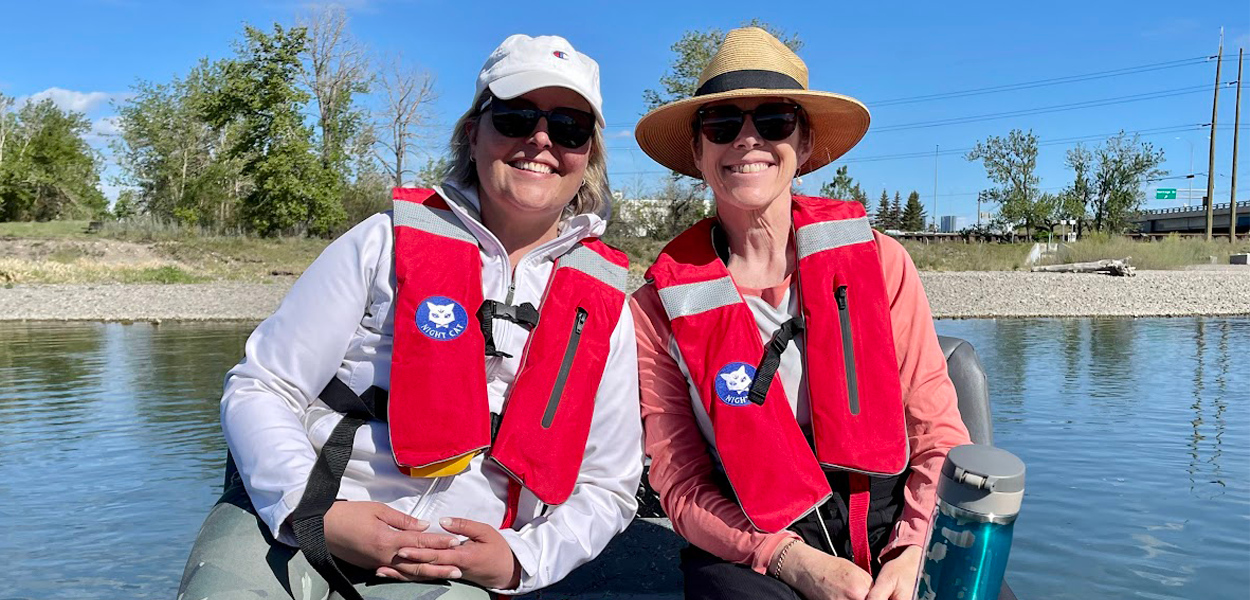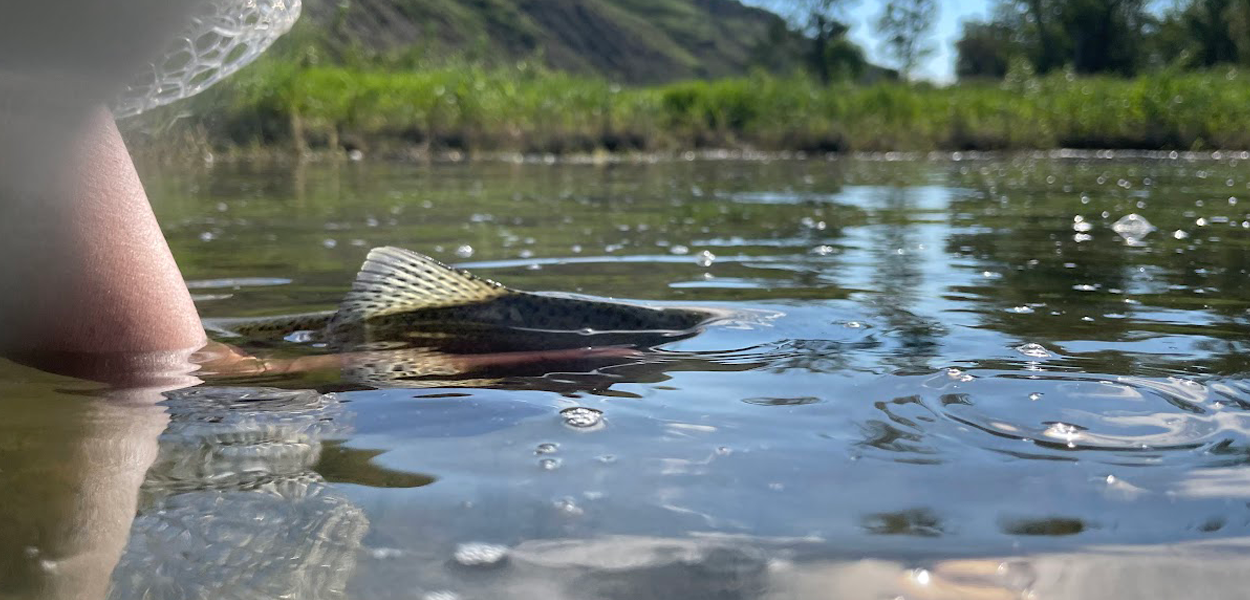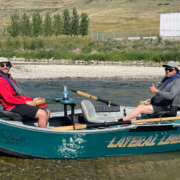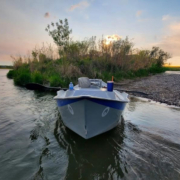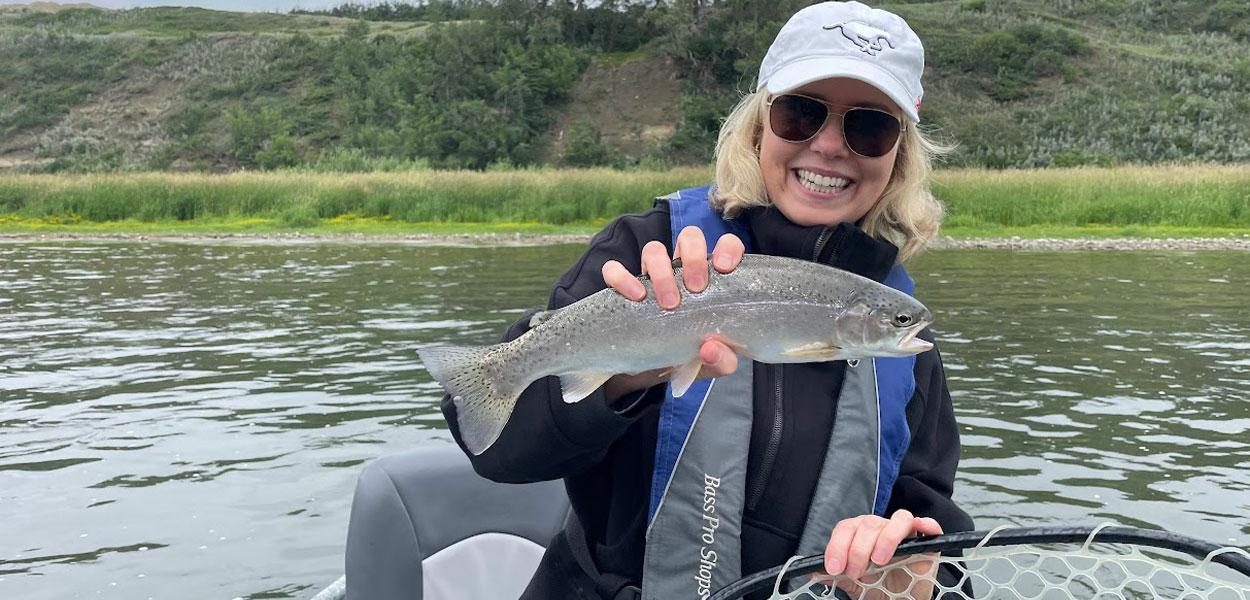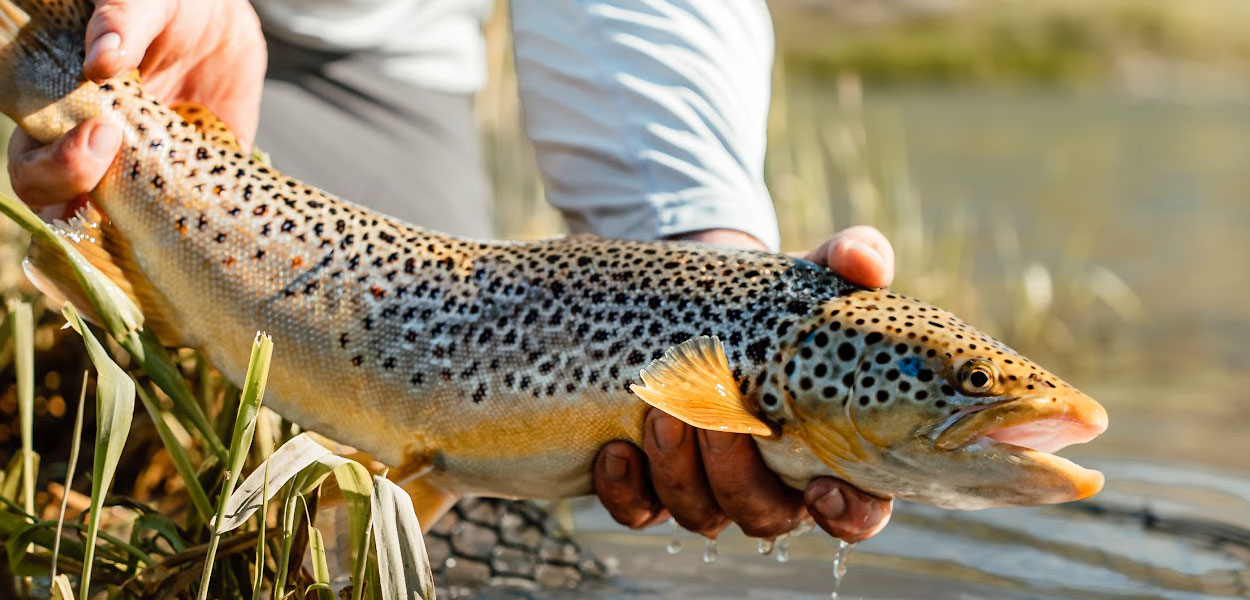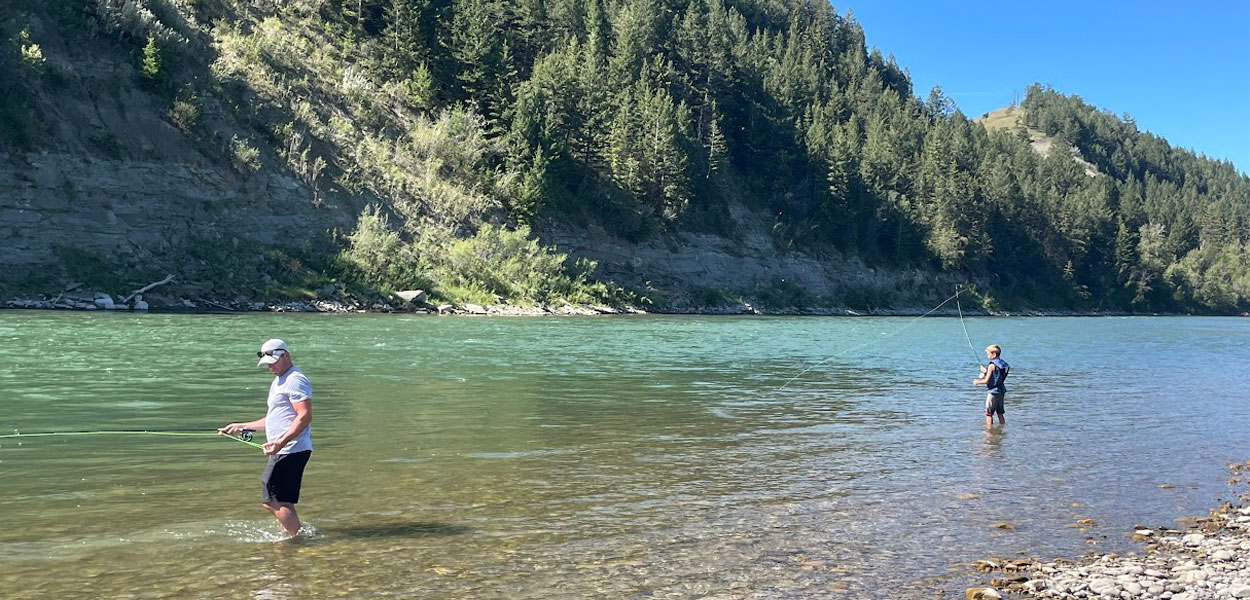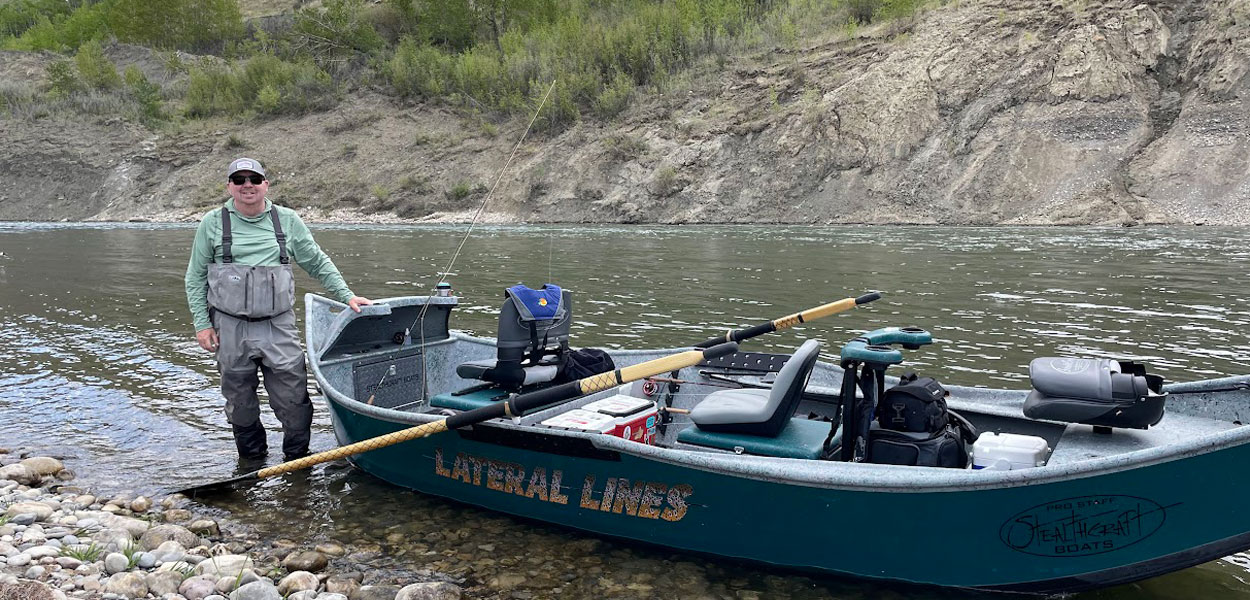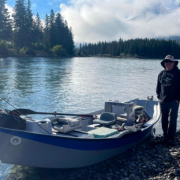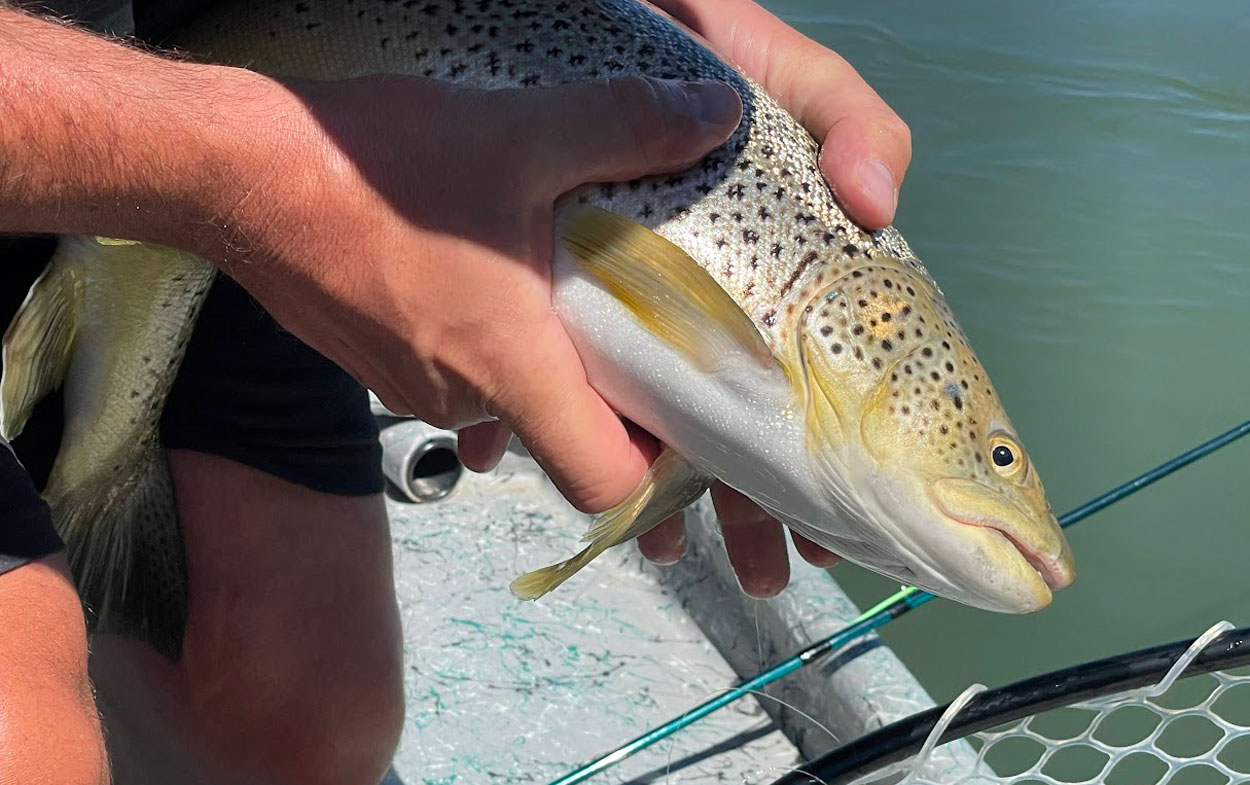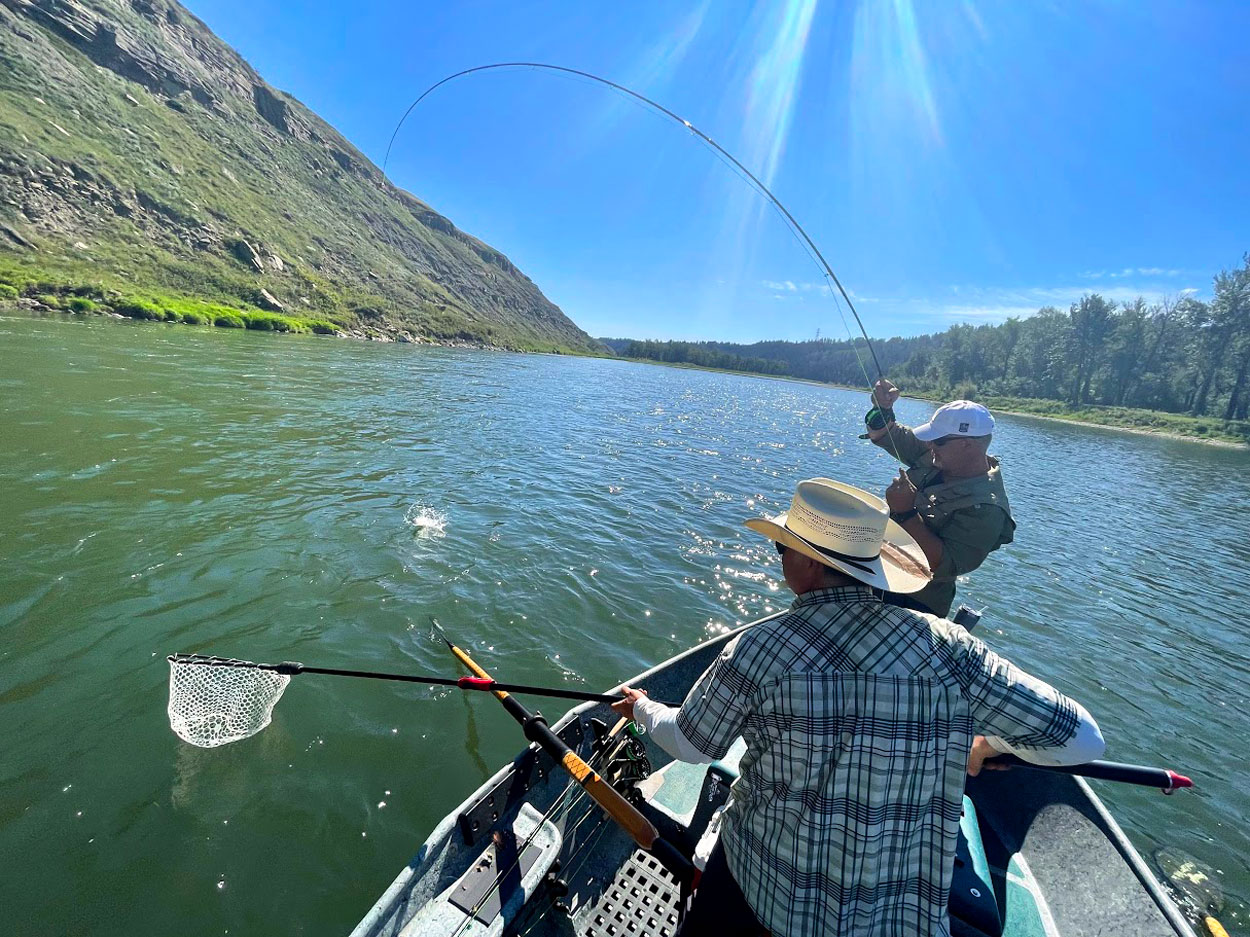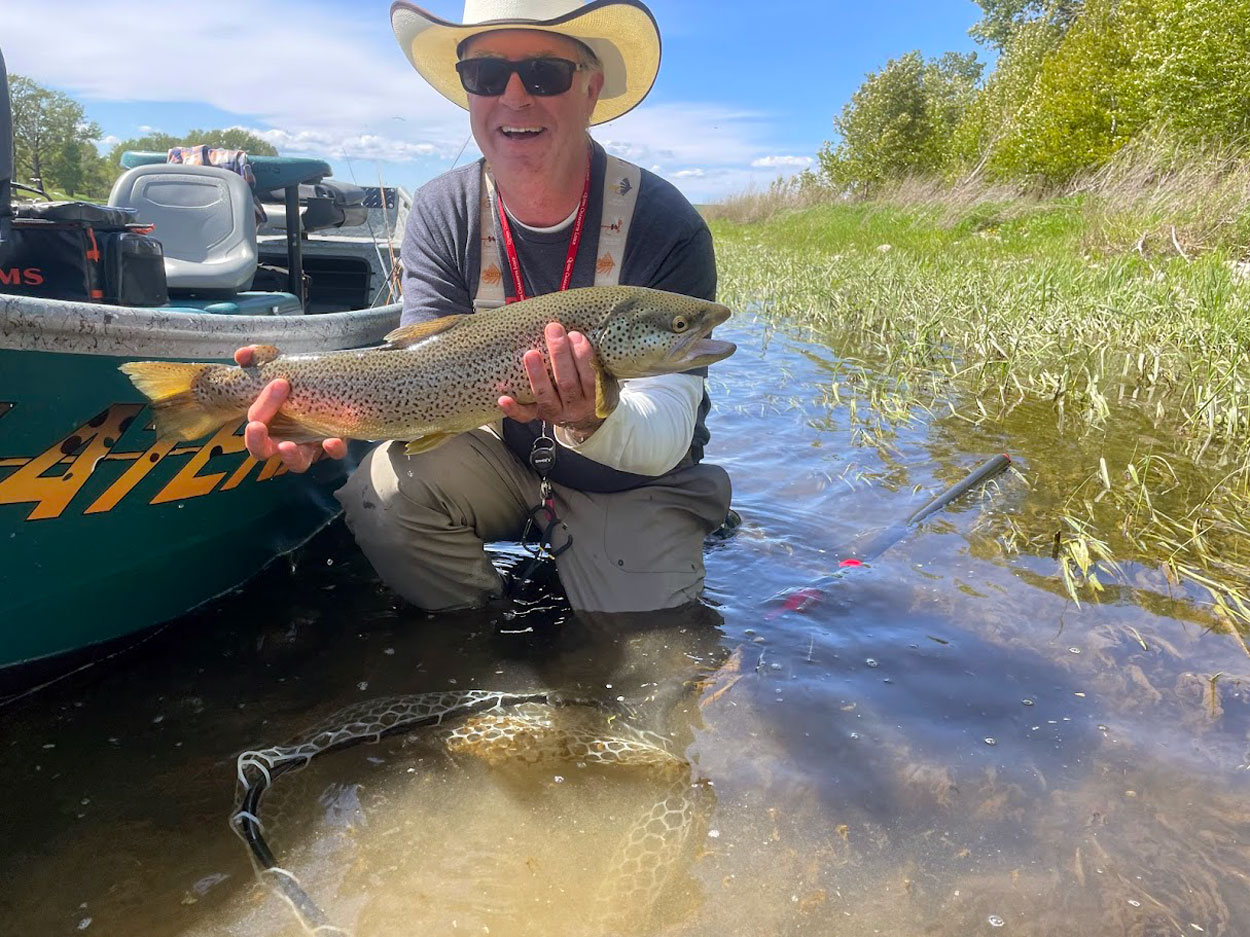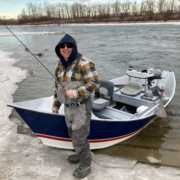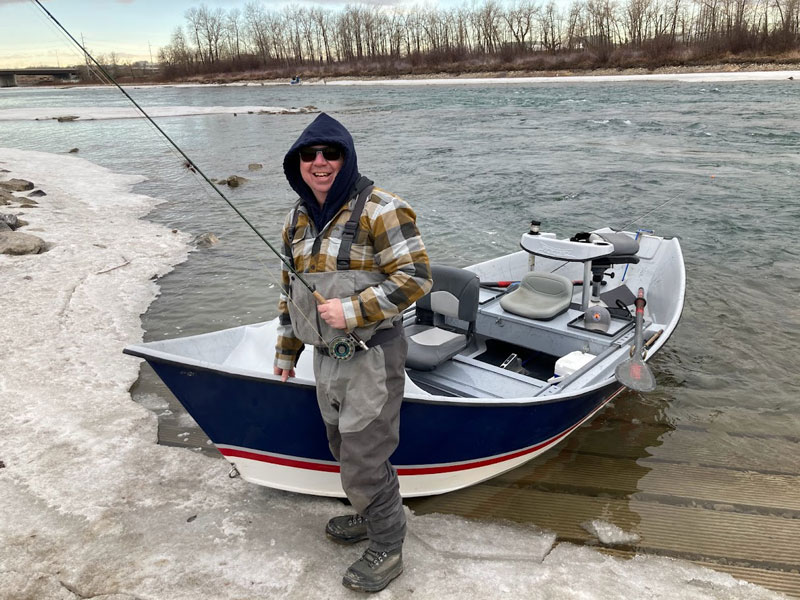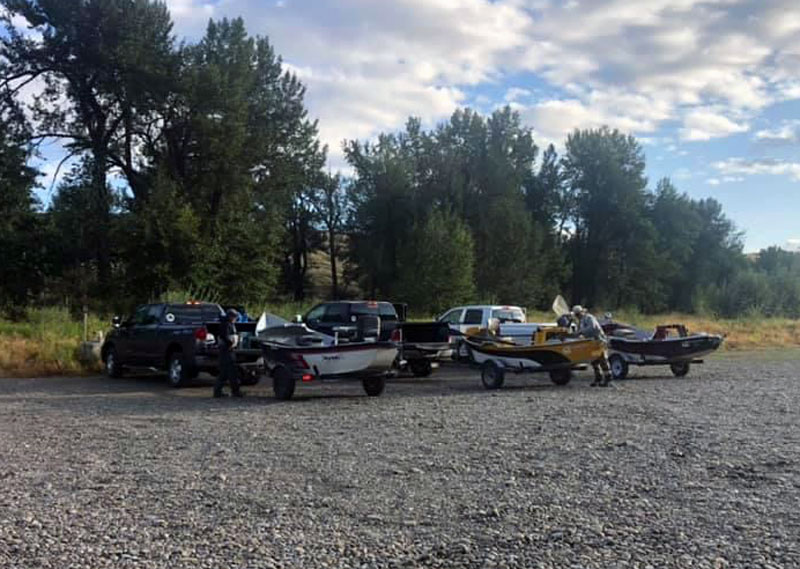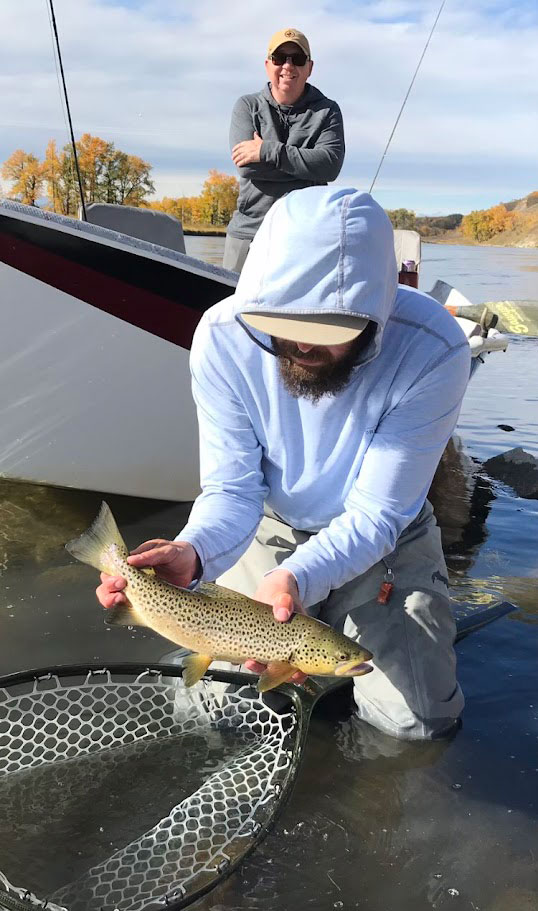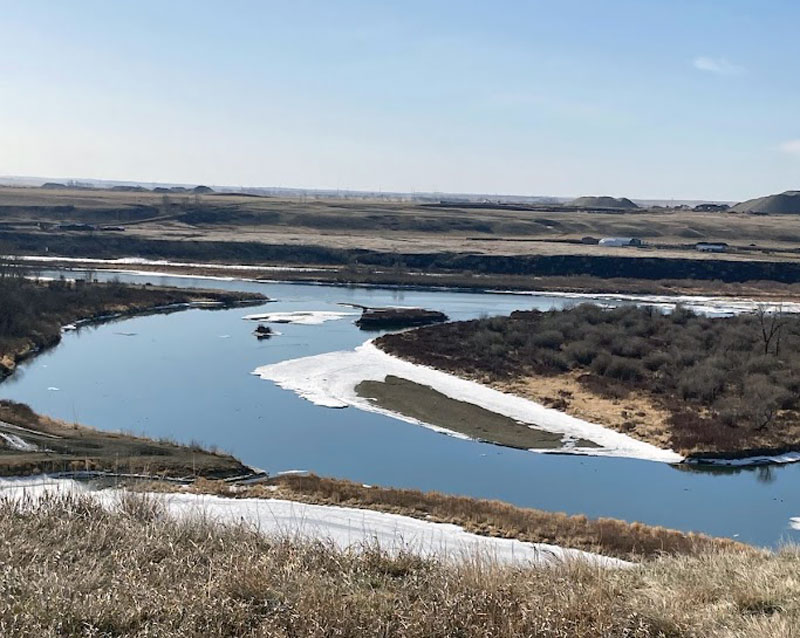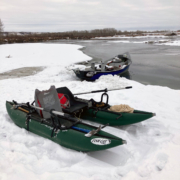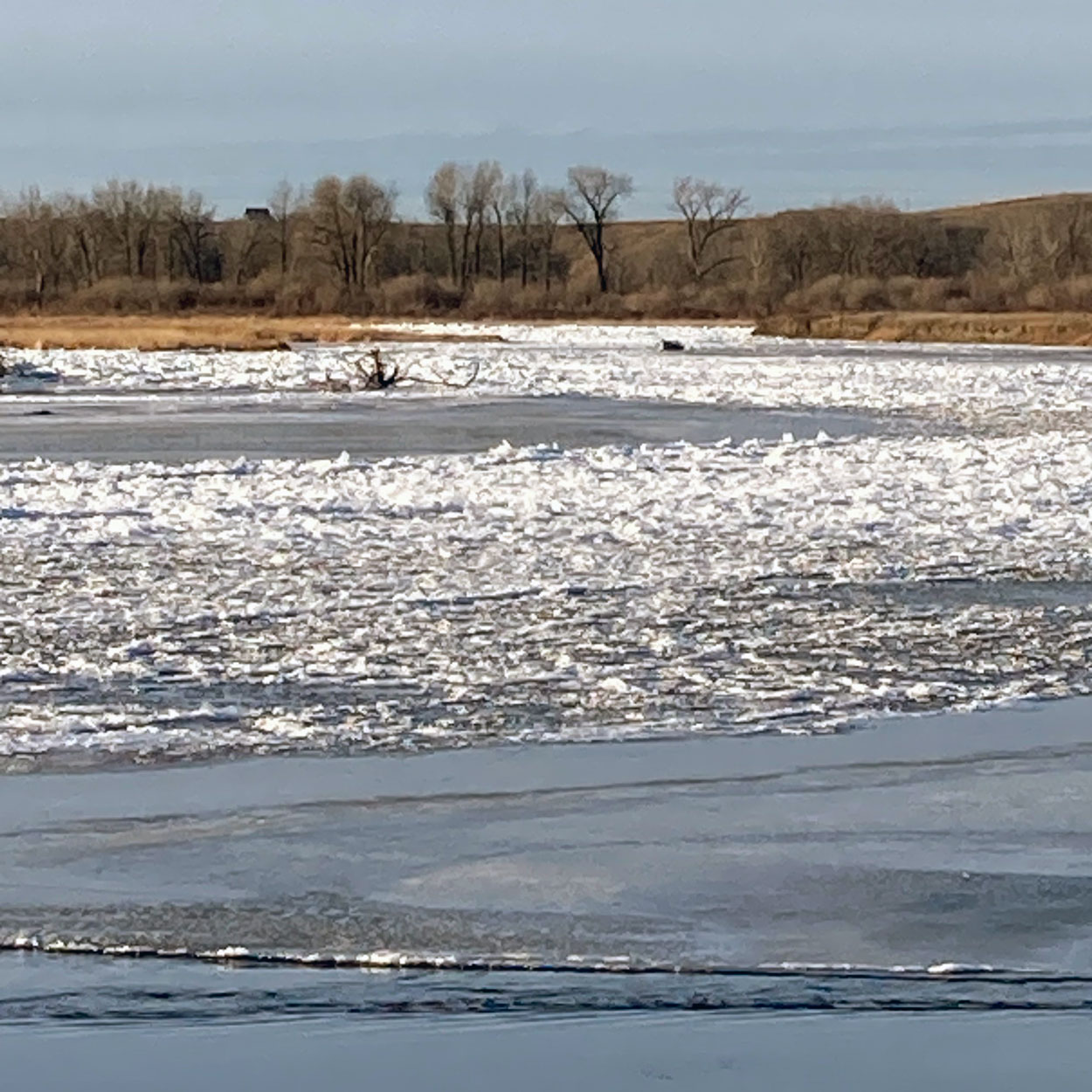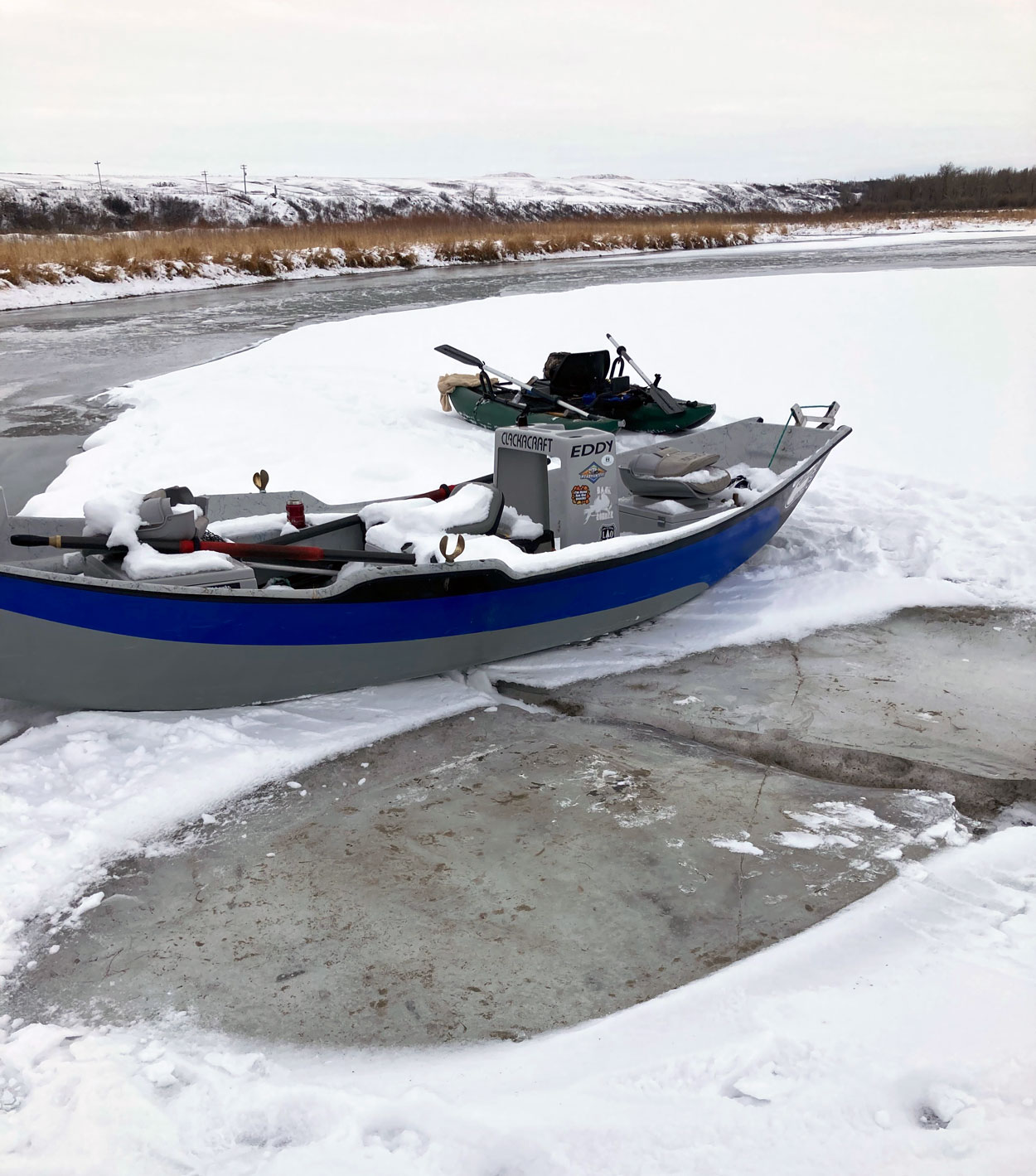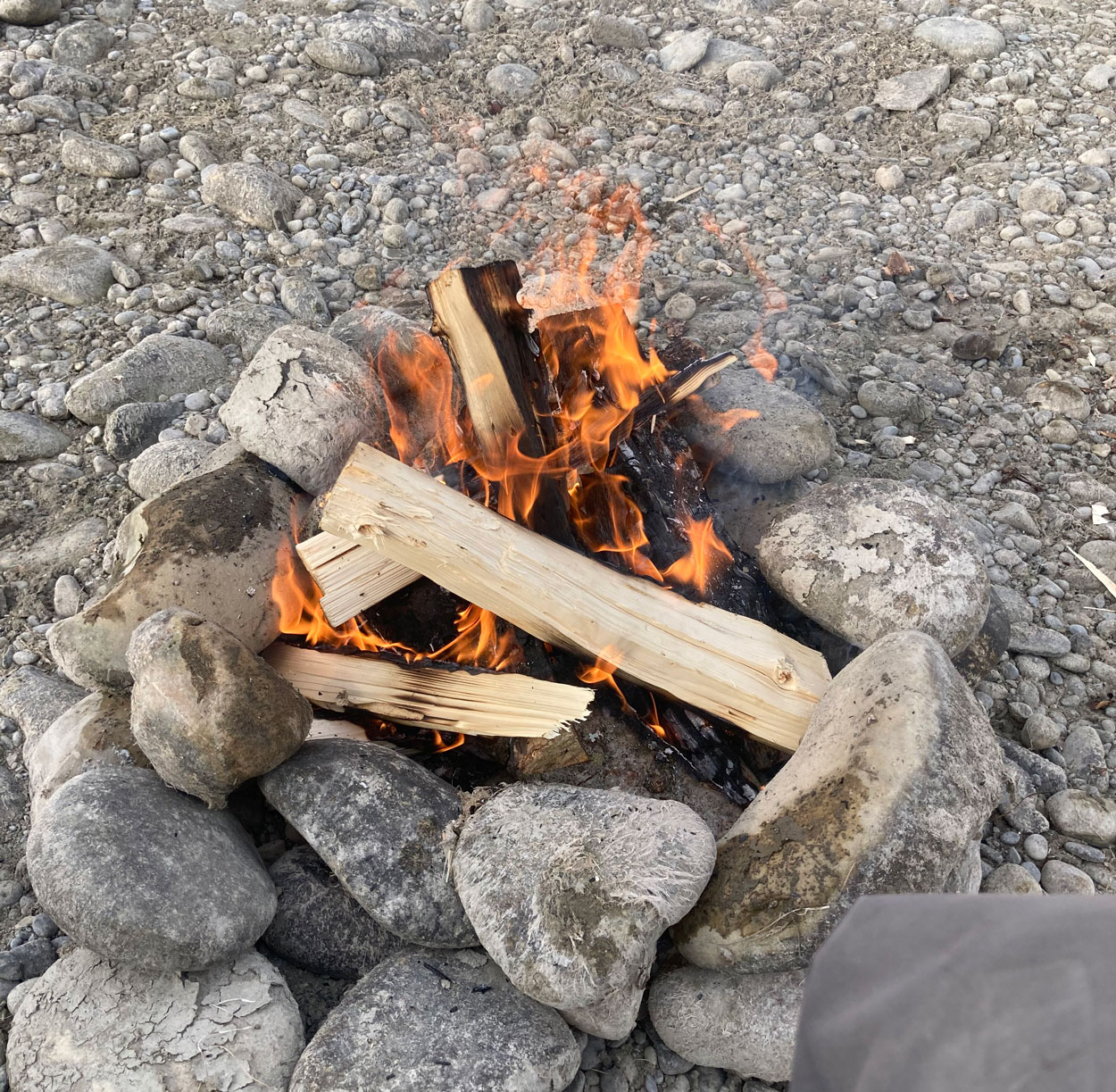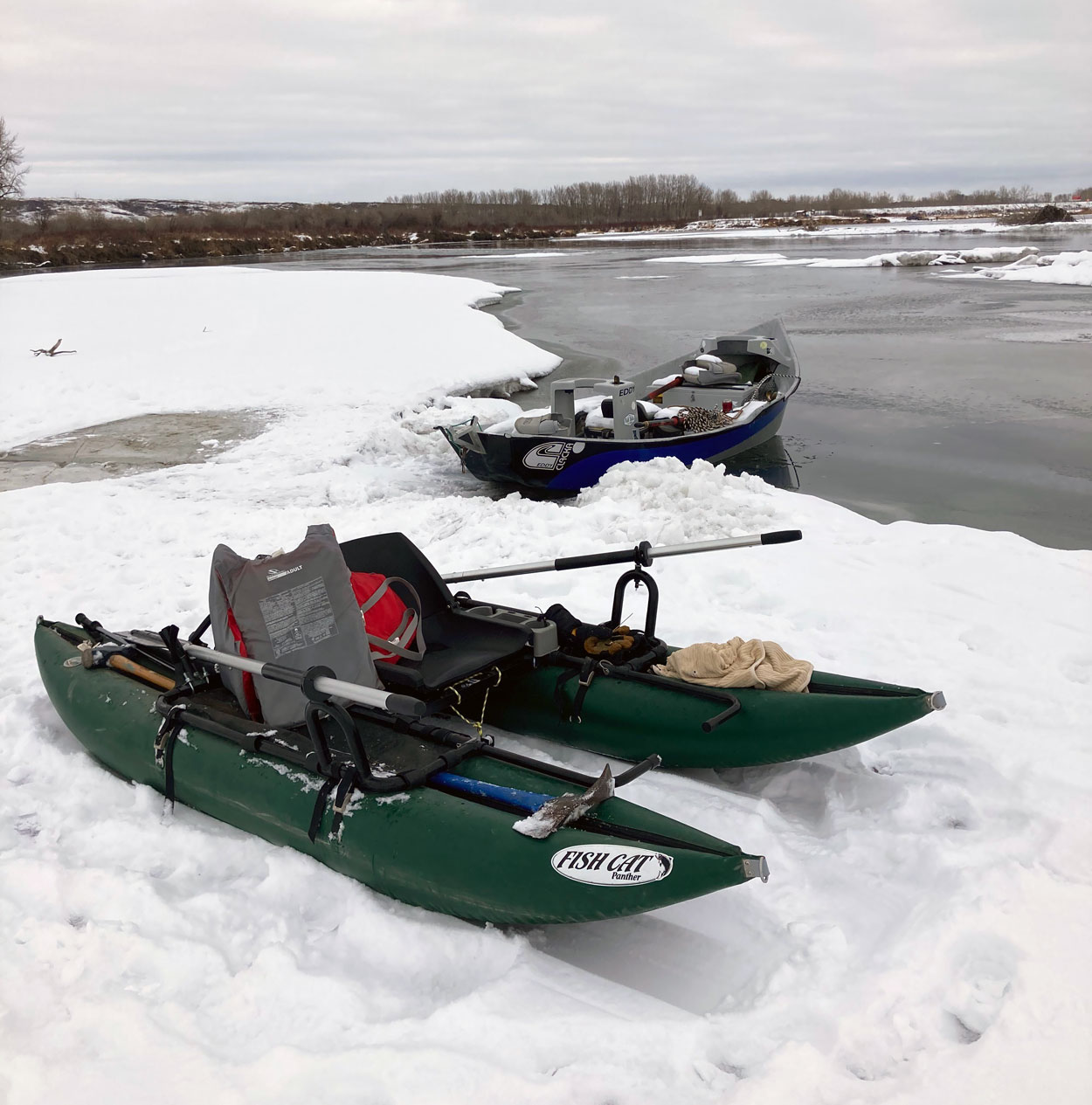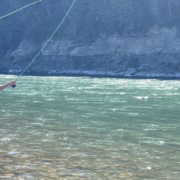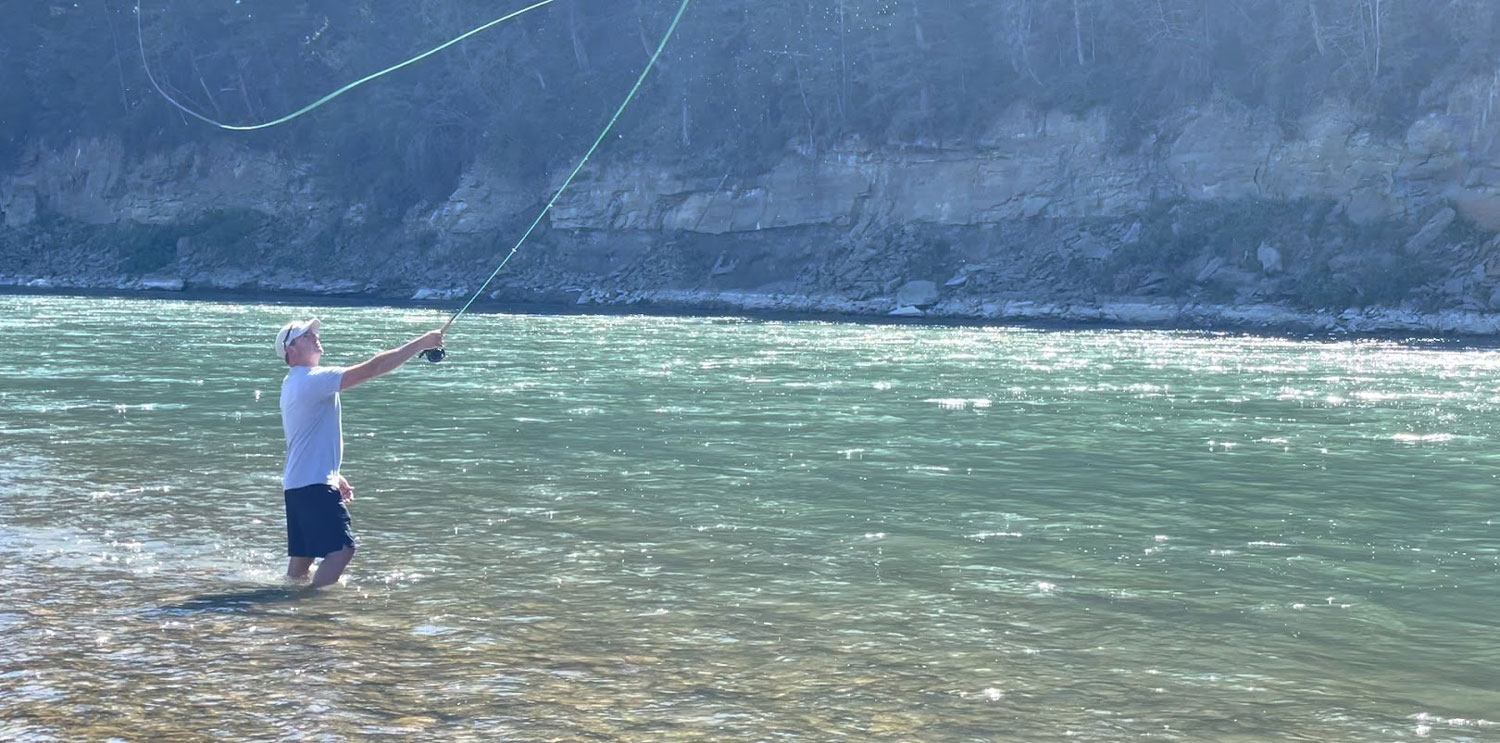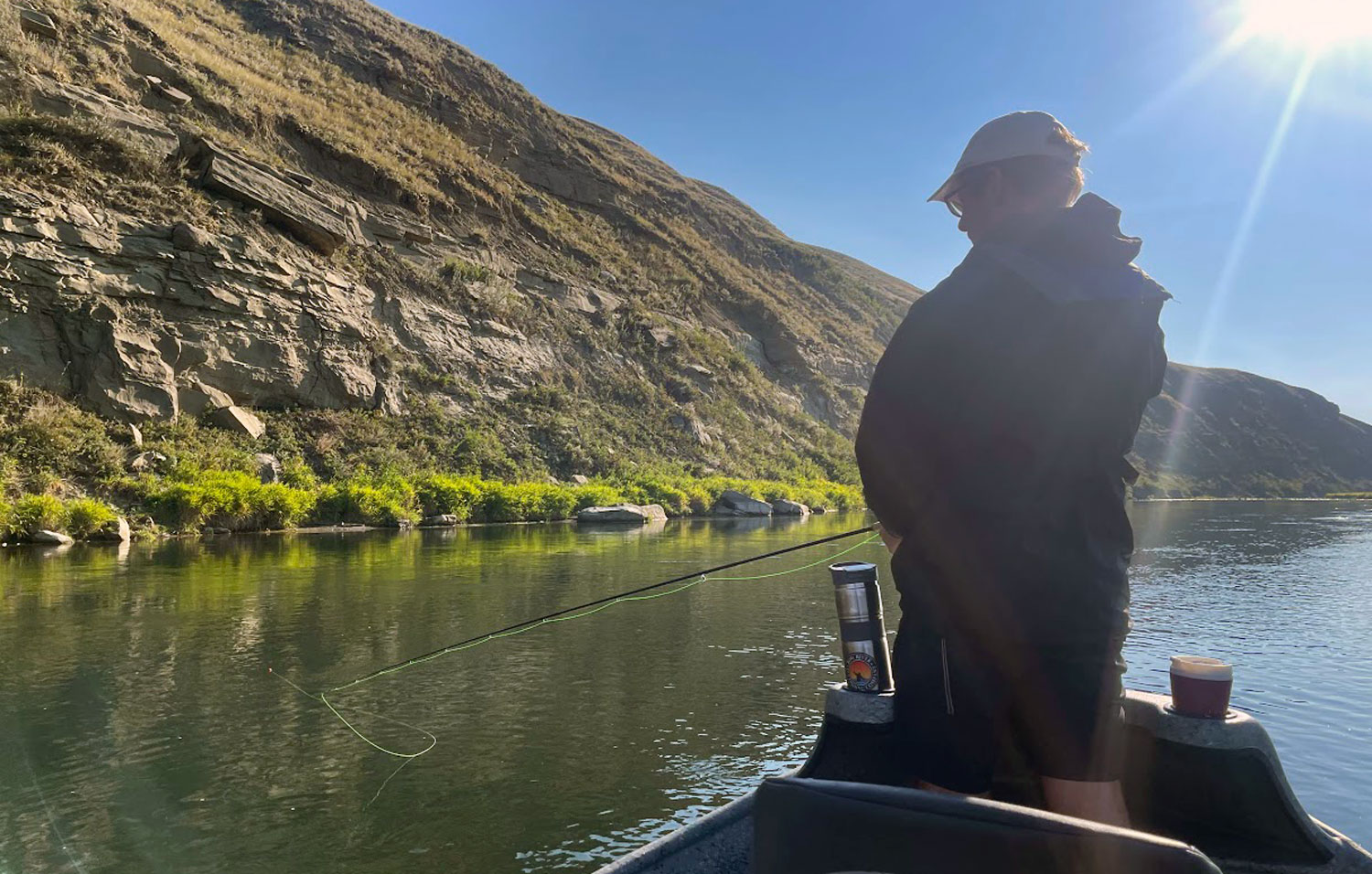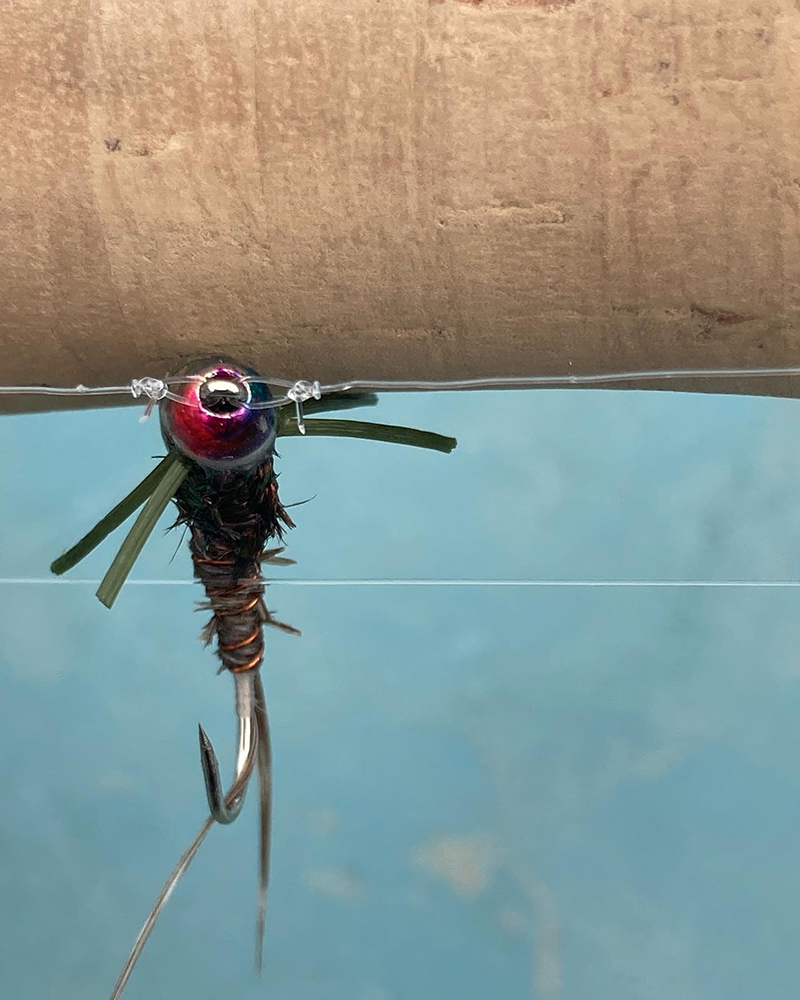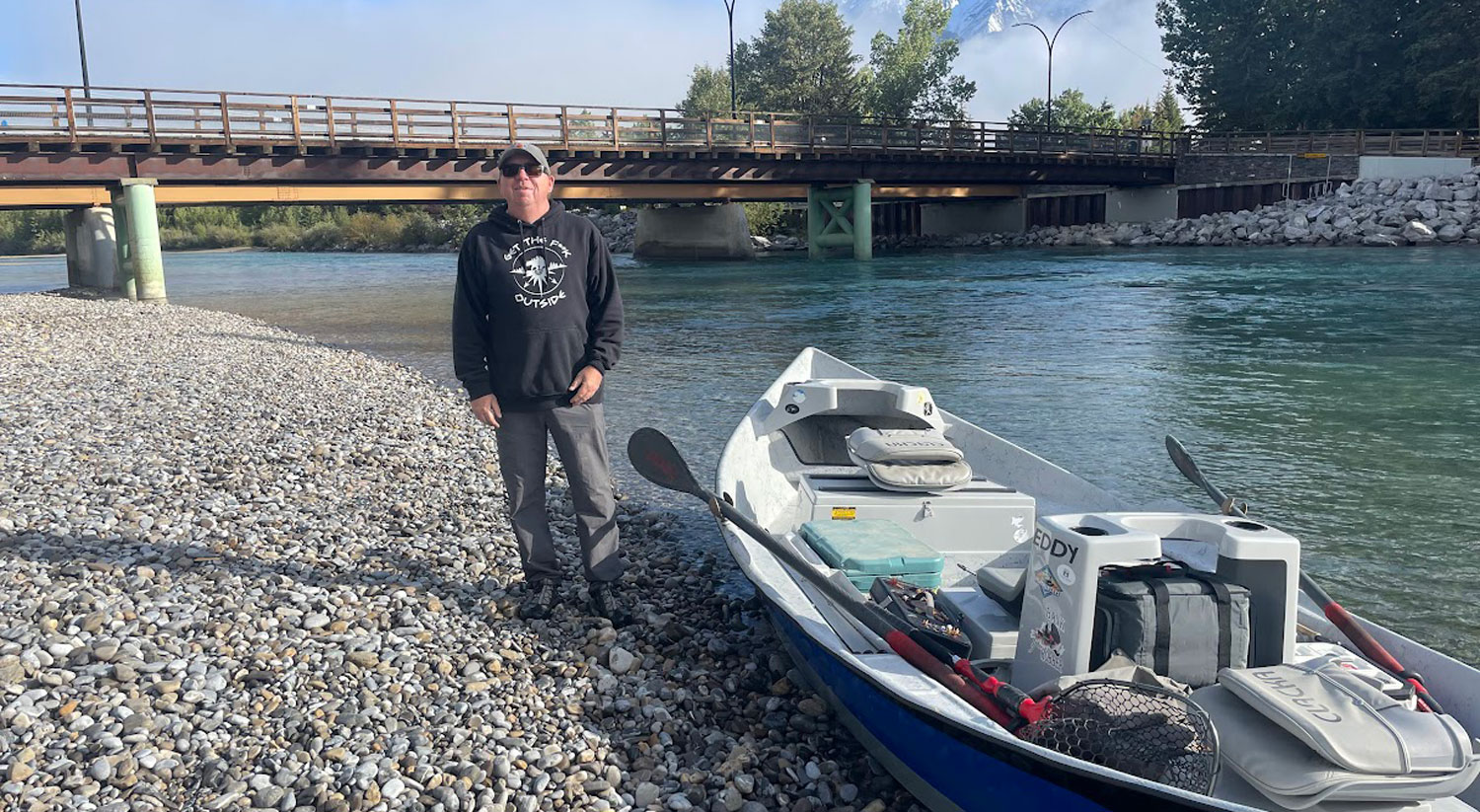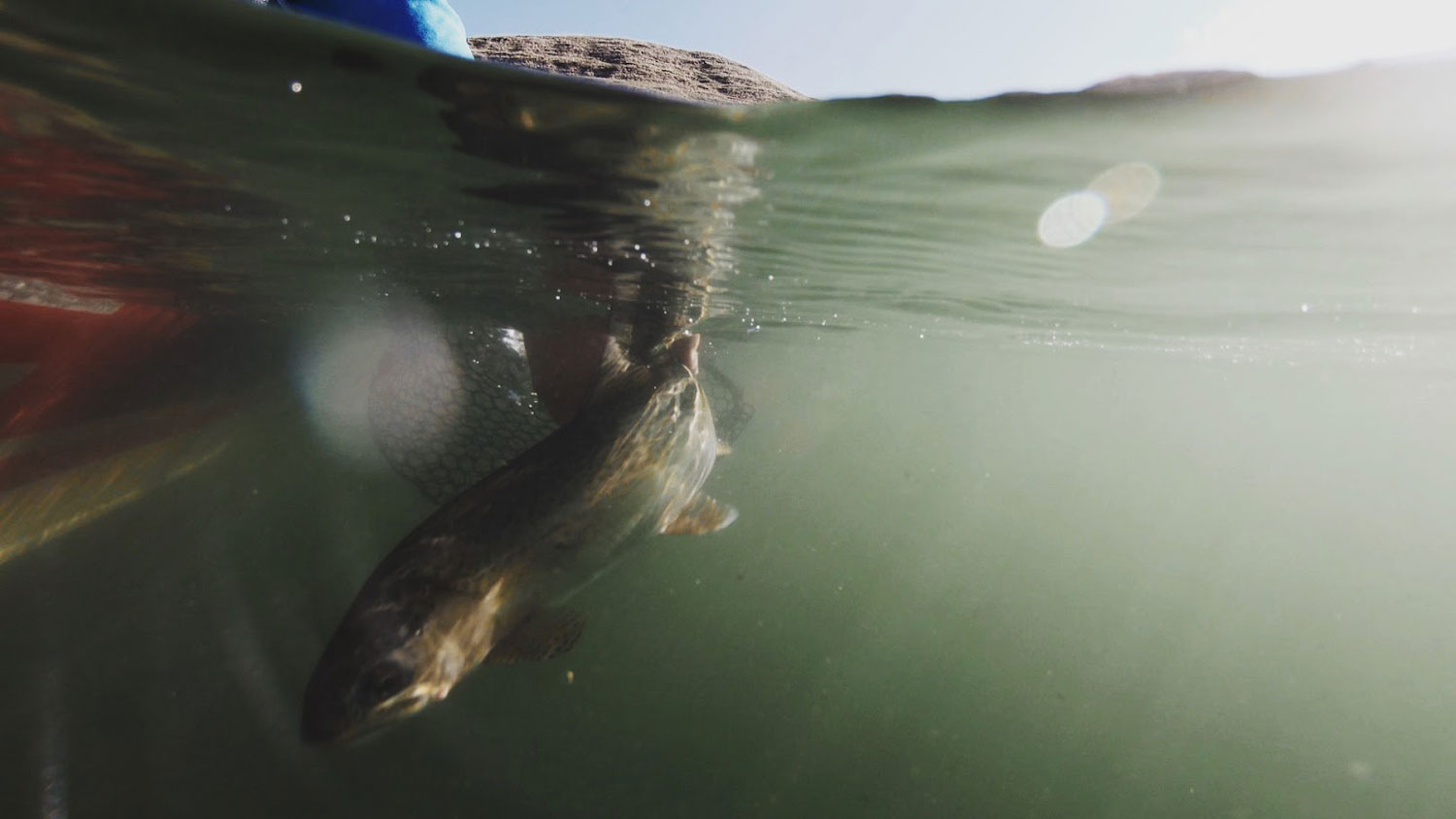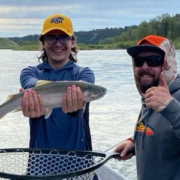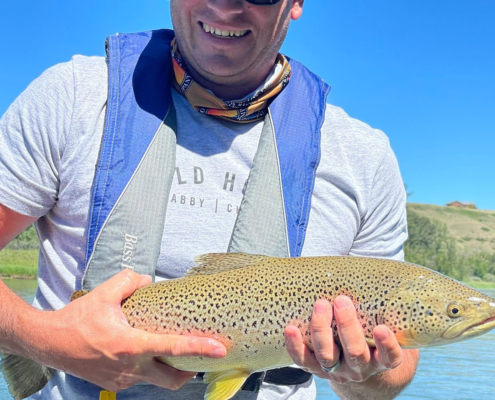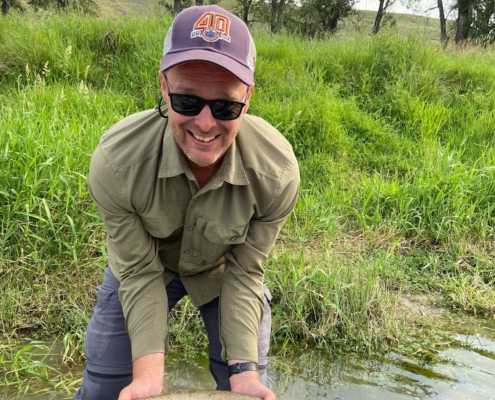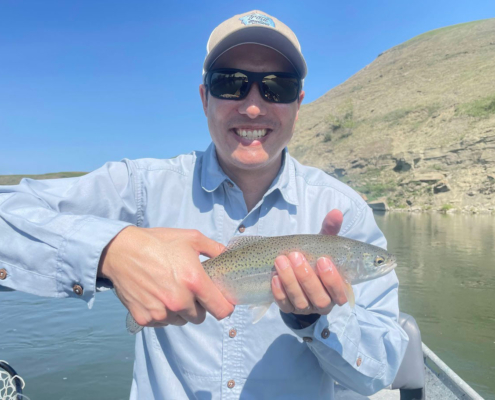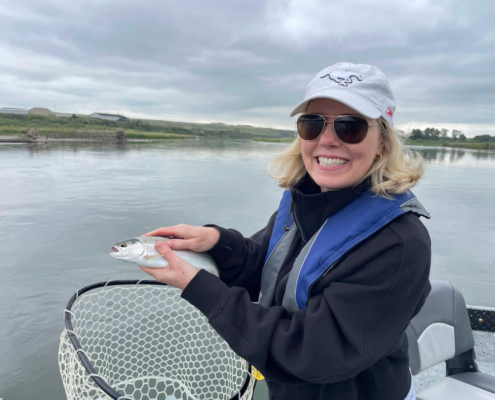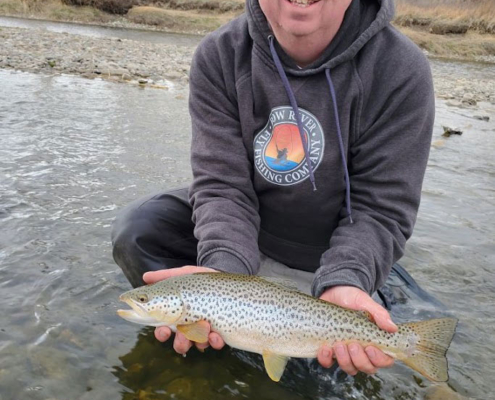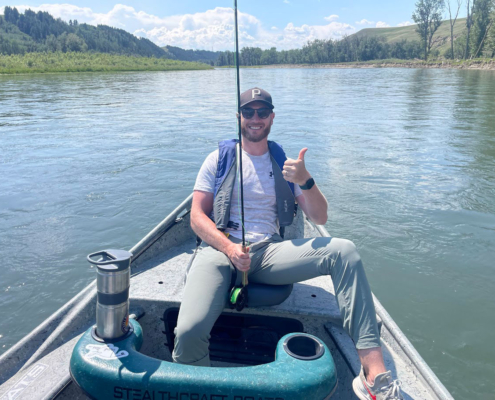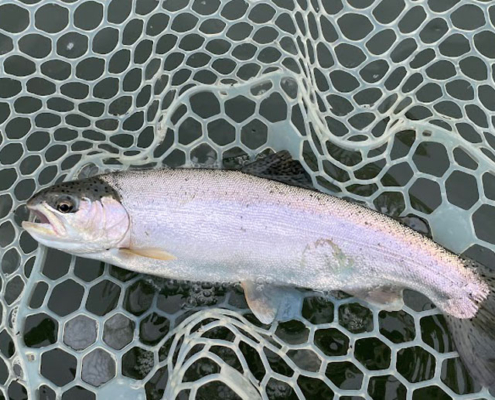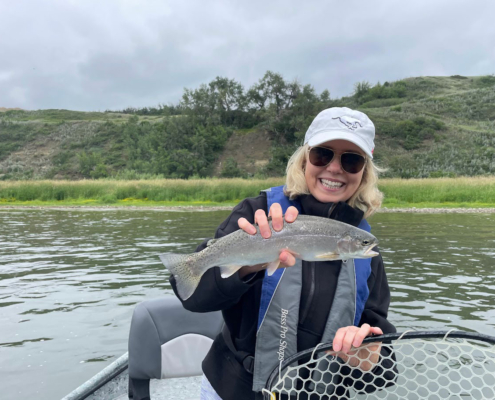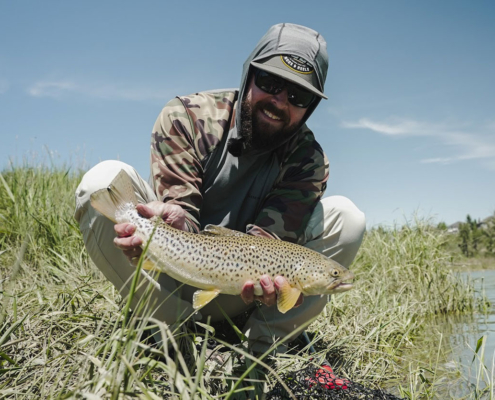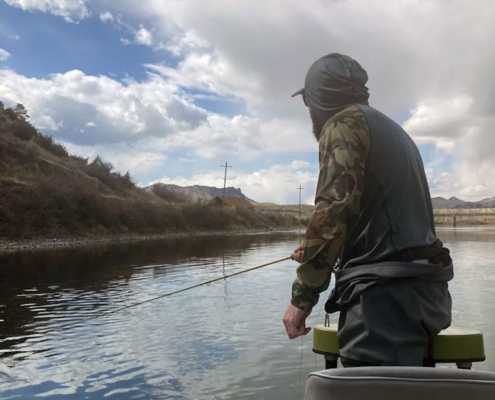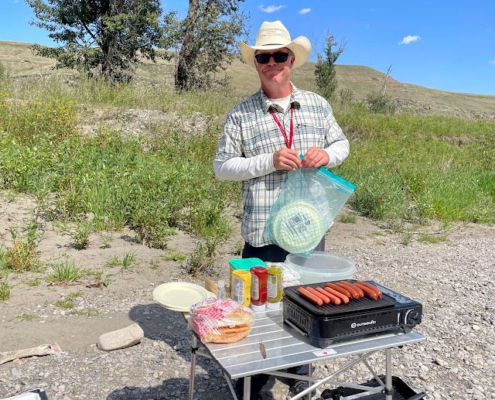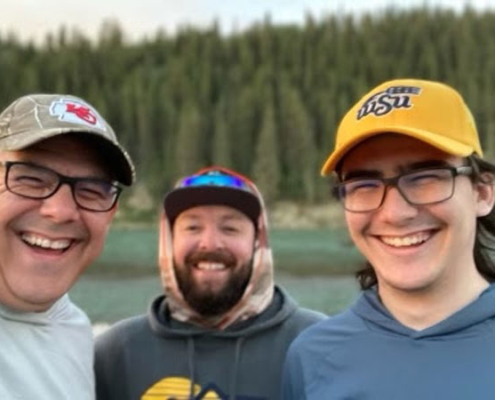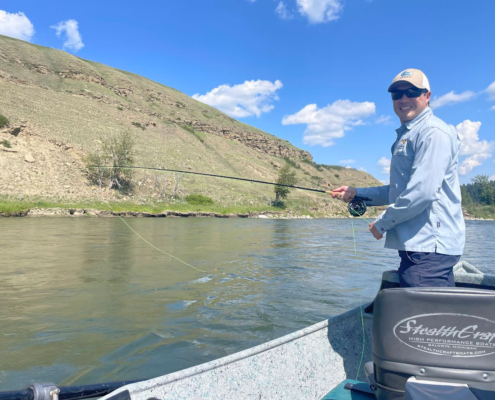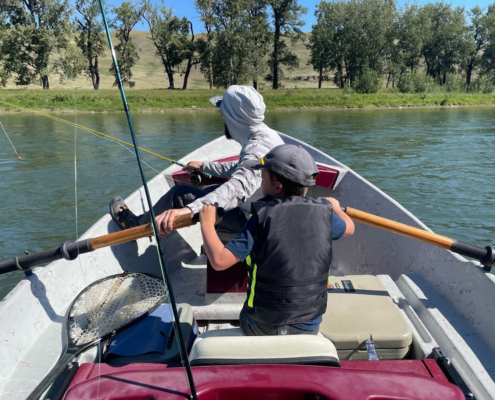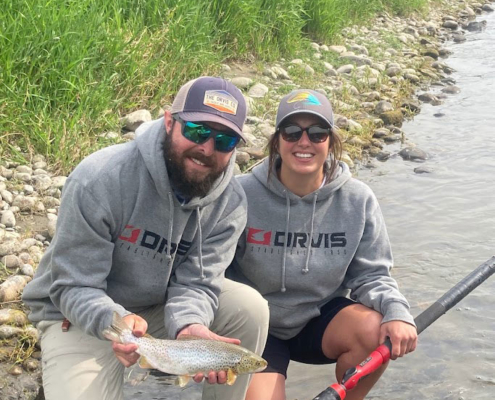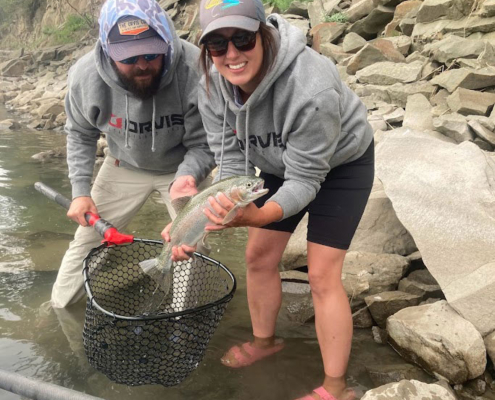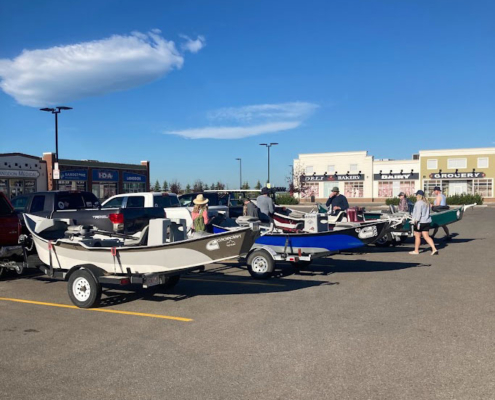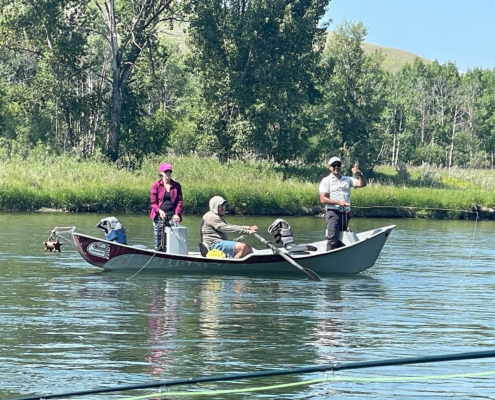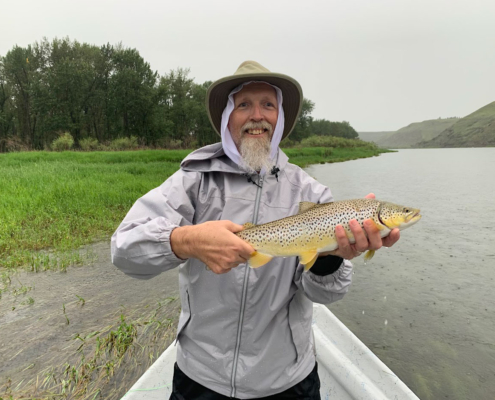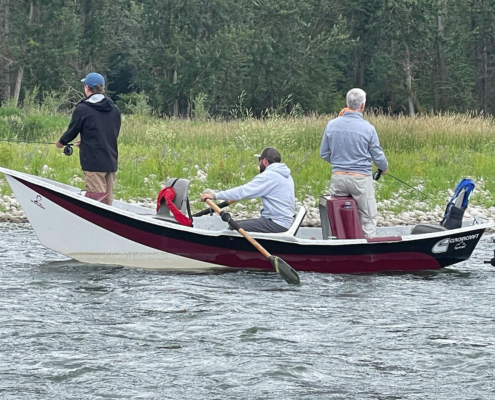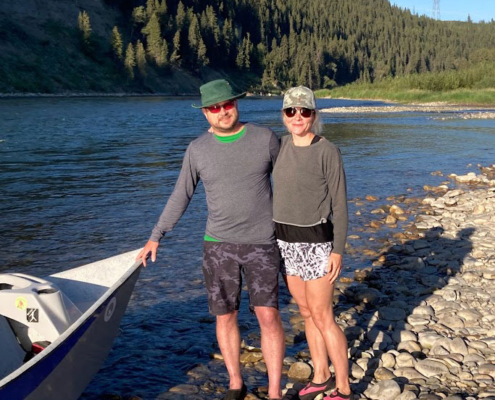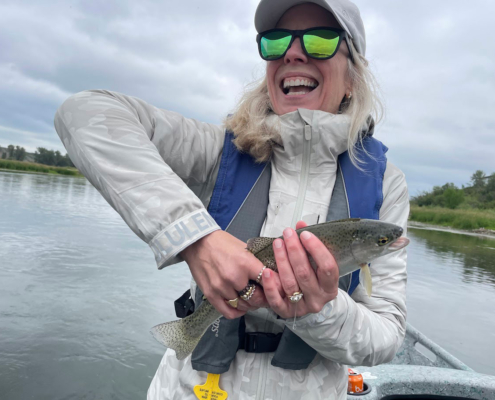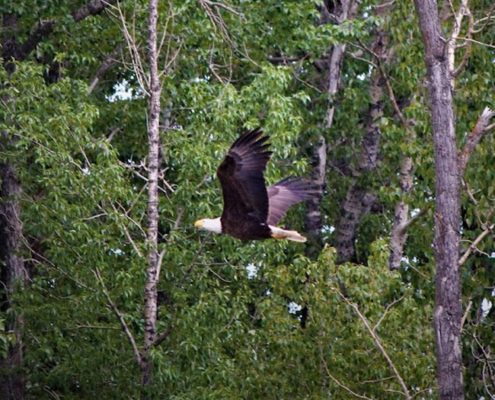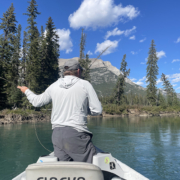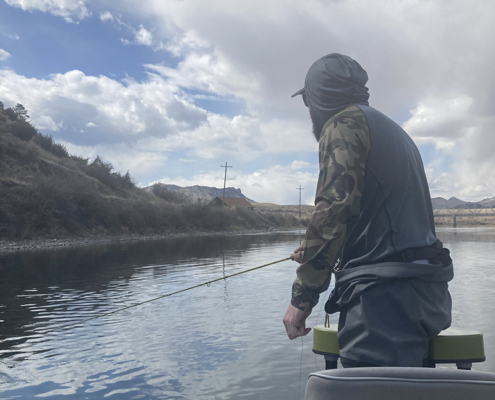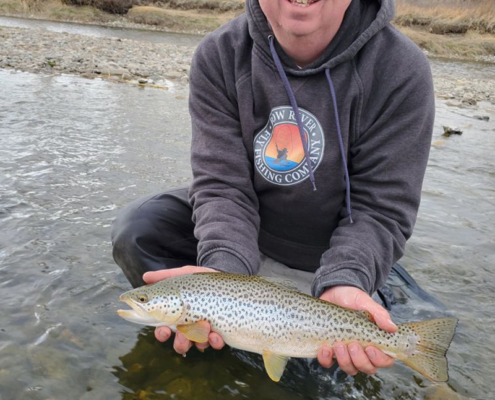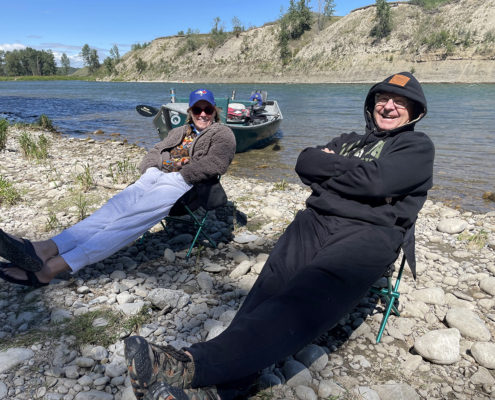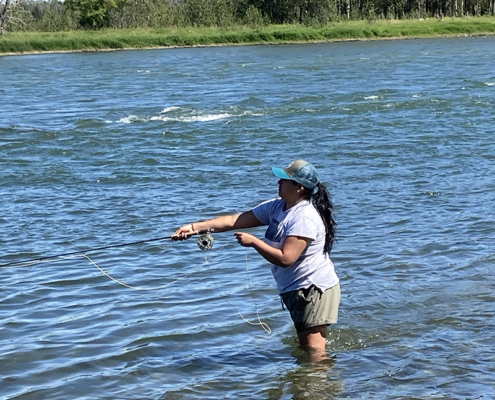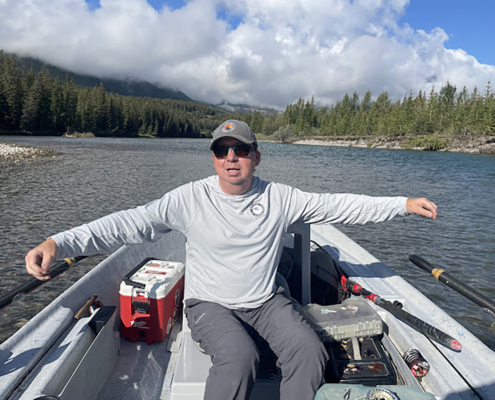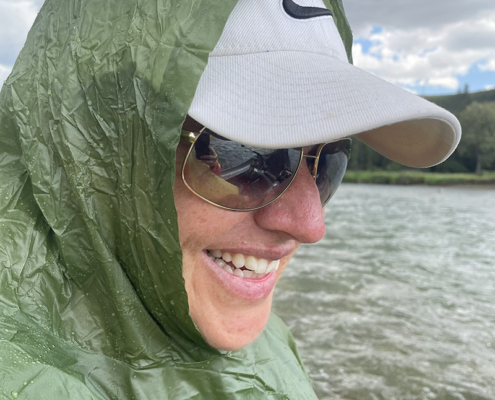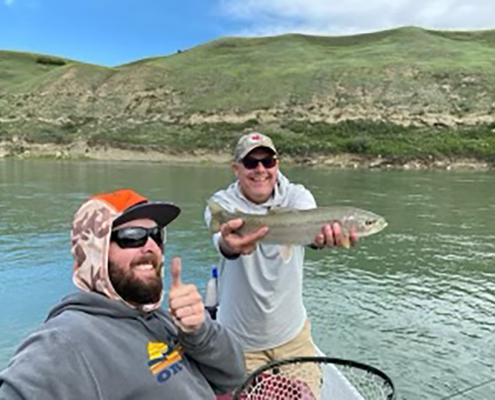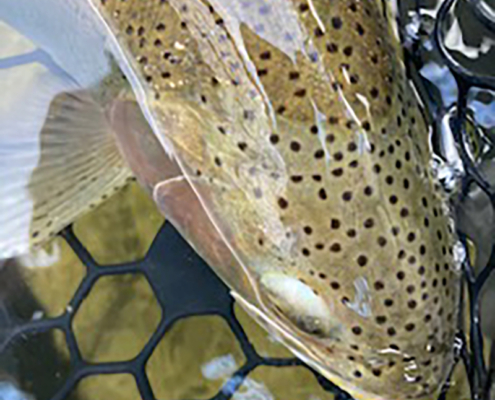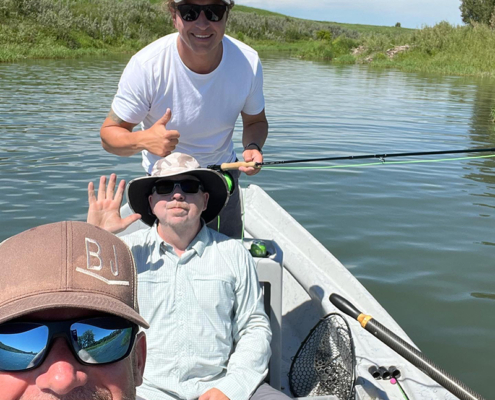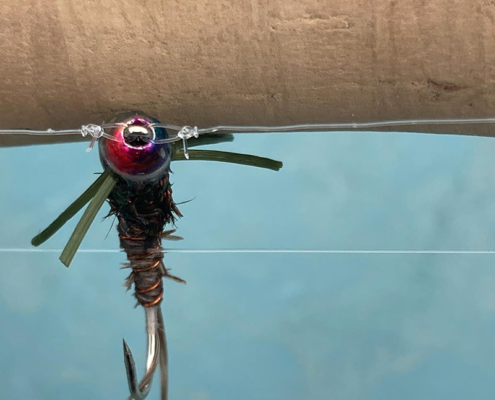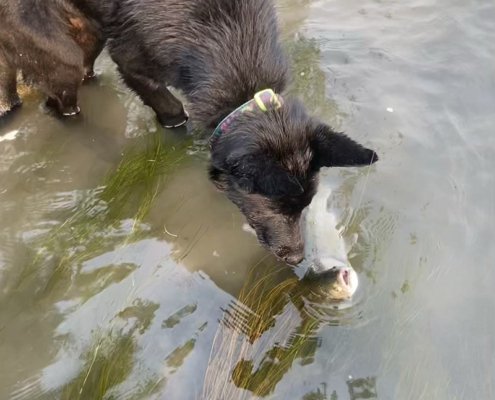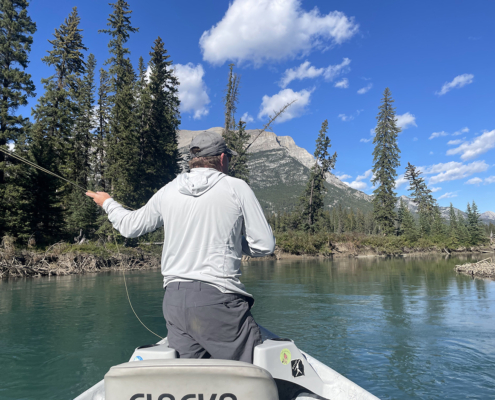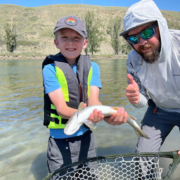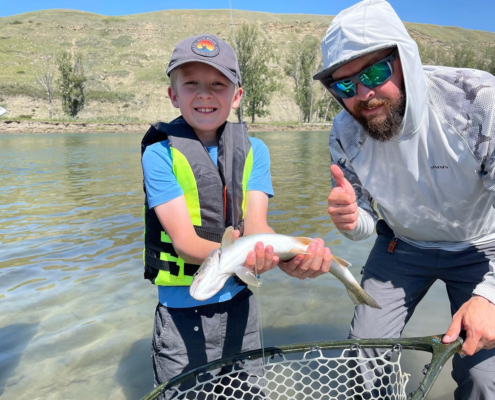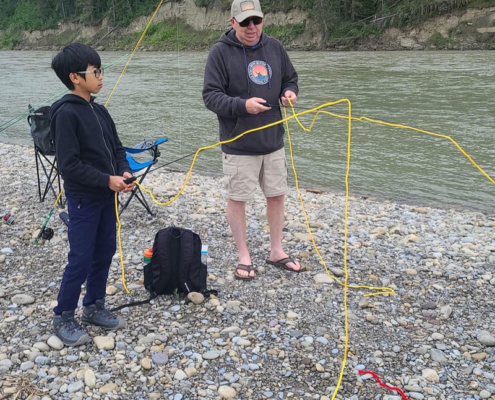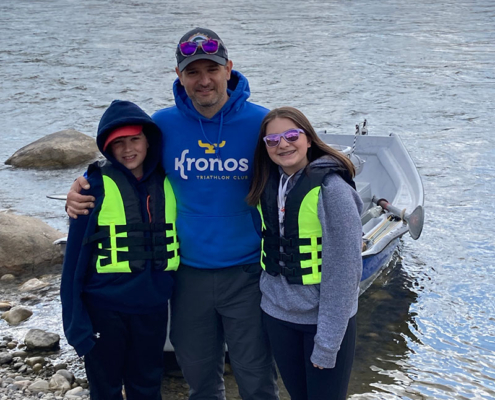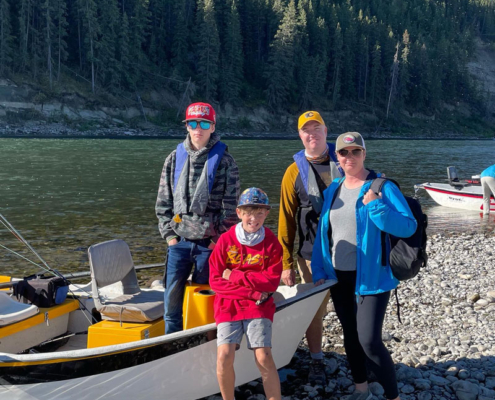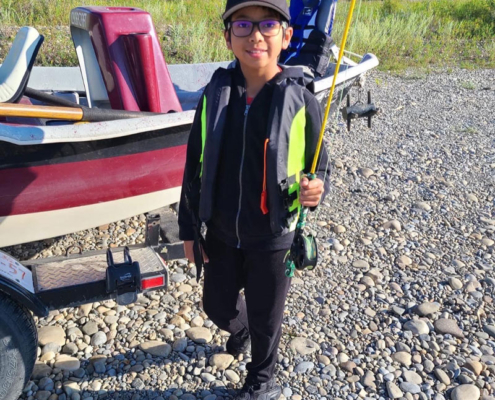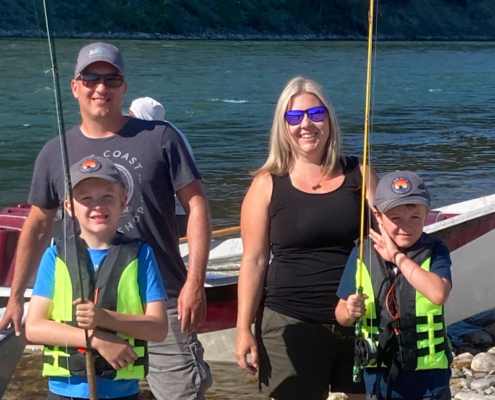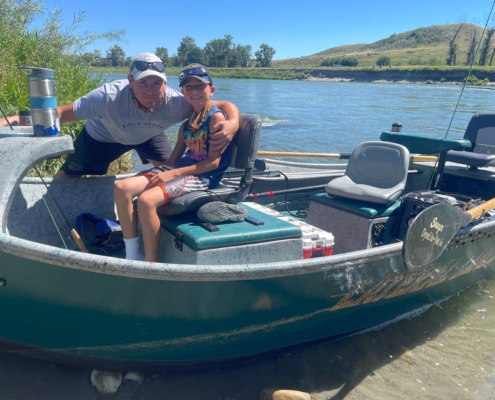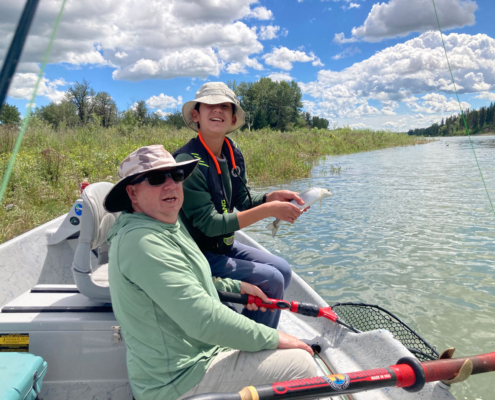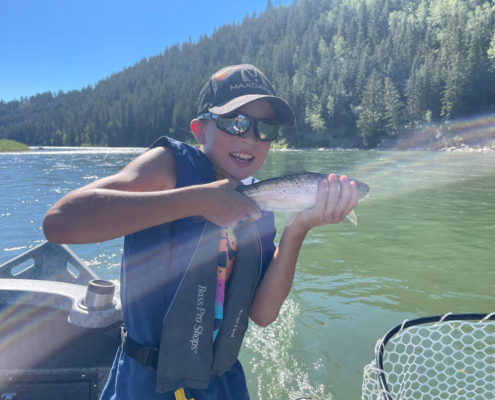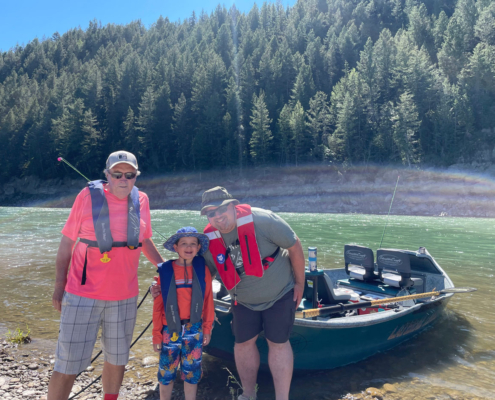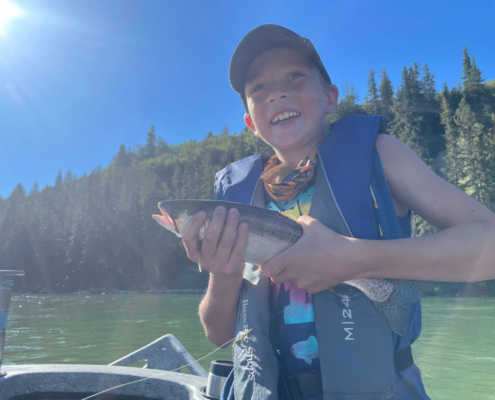Discover the thrilling adventures of a sports fishing company as they reflect on their busiest season yet on the majestic Bow River.
The sports fishing season on the Bow River in southern Alberta has come to a close, and it has been one for the books. Anglers from all over the world flocked to this popular fishing destination to test their skills and catch some impressive fish. The guides at our fly fishing company had their hands full, but they made sure that each and every guest had an unforgettable experience on the water.
Another Great Season Fly Fishing in Southern Alberta
For yet another year, the Bow River proved why it is a must-visit spot for anglers. This beautiful river is known for its abundance of fish species, including brown trout, rainbow trout, and Rocky Mountain Whitefish. Its diverse ecosystem provides the perfect conditions for fly fishing, making it a dream come true for both seasoned anglers and beginners.
With its breathtaking scenery and glacial waters, the Bow River offers more than just a fishing experience. It is a place where nature enthusiasts can escape the hustle and bustle of everyday life and immerse themselves in the tranquility of the great outdoors.
Bow River Remains a Popular Destination for Anglers
This season, the Bow River attracted anglers from across North America and beyond. Its reputation as a world-class fishing destination continues to grow, and it’s not hard to see why. The river is well- populated with wild trout, and its size and flow rate make it a challenging yet rewarding place to fish. Whether you are an experienced angler or new to the sport, the Bow River offers opportunities for everyone. The calm stretches of the river are perfect for beginners to practice their casting techniques, while the fast-flowing sections provide a thrilling challenge for seasoned fishermen.
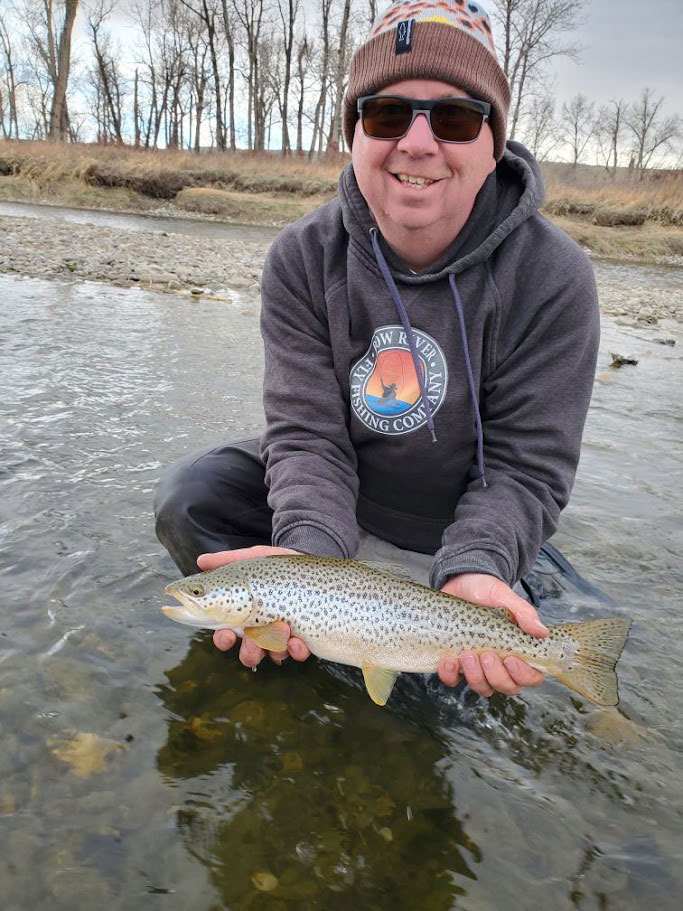 Lead Guide, Scott Smith, Looks Back on 2023 Season
Lead Guide, Scott Smith, Looks Back on 2023 Season
I think the biggest story of the 2023 season must be adaptability. We saw a record low snowpack and low water conditions for most of the season. The summer saw steady flows at 80 CMS which helped the fish and bug life to stabilize. There were a few weeks dealing with Time of Day restrictions, where we had to be done fishing by 2pm. This didn’t affect our guided trips other than we had guests out on the water earlier. The good news is our trout were willing to play and we had some amazing fish to the boat this season!
Spring Fly Fishing Highlights
Spring saw some great early season top water action on Caddis and BWO’s. The guides love stalking big “happy” fish feeding on small bugs. We often get just as excited as our guests when we hook these beauties! For our guests on the Deep Nymph Rig and Hopper Dropper, I fished a #16 copper-coloured Hares Ear variation for about 8 weeks straight. This caddis pupa imitation seemed to do the trick and judging by the gaping space in my fly box, it was the go-to fly for late spring and early summer. I often fished it with a black or brown leech pattern while deep nymphing.
Summer Fly Fishing Highlights
Summer saw a mix of a fantastic Stone Fly season along with the continuation of Caddis and some surprisingly great Pale Morning Dunn action. If you’ve never experienced getting on the water ridiculously early to throw giant foam bugs, you’re missing out. I’m not sure how you feel about a shot of adrenaline at 4:30am, but these takes are explosive! I often paired a big old Demoes Golden Stone with a simple Elk Hair Caddis in the early mornings. However, there were several mornings we just tossed the foam until the sun came over the ridge. I was so happy every time I had to pull the boat over to stalk fish for guests. That one big fish up on emergers always presents a challenge. Figuring out which size of bug, then getting the guest into position for the right cast in the feeding lane is just the best part of guiding in my opinion. Second best is the take, the line goes tight, and all hell breaks loose!!
Fall Fly Fishing Highlights
Fall fishing was a little different this season. The water levels dropped significantly so we didn’t see much active current along the banks. I don’t have scientific basis for this, but I think this is why our Hopper season was sporadic. The banks were dry and there were plenty of hoppers everywhere. The fish just didn’t seem to key on them for me. That said, at some point the trout starting hammering Prince Nymphs and Pheasant Tails on the dropper. For the deep nymph rig, I was running mostly the Reece’s Pieces worm and a #14 Prince. No magic patterns, but fished at the right depth, this was deadly. I don’t get a lot of opportunity to fish streamers with guests, but when we did, the Bullet Head Sculpin, the Skiiddish Smolt and a good old Wooly Bugger saw action and success.
Thank you to the amazing guides who help make fishy memories for our guests. Your dedication to your craft is inspiring and I learn from all of you. Thank you to our returning guests for trusting us with your experience. We hope we live up to your expectations and would love to see you again! Thank you to our new guests. We hope you enjoyed your time on the water with us as a new fly fisher or an experienced angler! Learn more about your Bow River fishing guides.
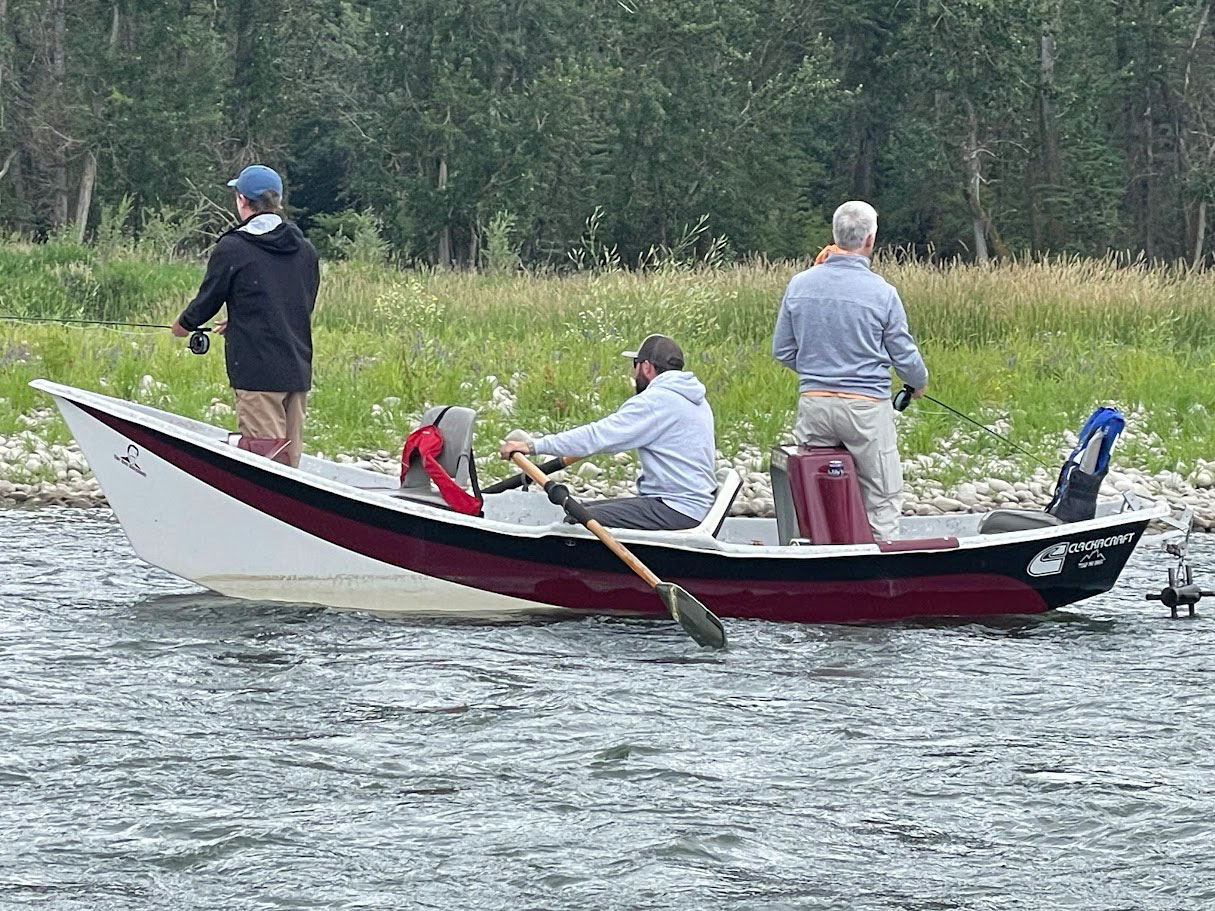
About the Bow River, Alberta
The Bow River is a majestic waterway that flows through the heart of Alberta. It spans over 587 kilometers and is fed by glacial runoff from the Canadian Rockies. Its location near Calgary makes it easily accessible for locals and tourists alike.
Not only is the Bow River teeming with fish, but it is also home to a variety of wildlife and bird species. On any given day, anglers may catch sight of bald eagles soaring overhead or elk and deer drinking from the river’s edge. It truly is a nature lover’s paradise.
What is Guided Fly Fishing?
Guided fly fishing is a service offered by professional fishing companies that pairs anglers with experienced guides. These guides have intimate knowledge of the river and its fish, and they can provide valuable insights and tips to help anglers improve their skills.
During a guided fly fishing trip, anglers are taken to the best fishing spots on the Bow River. The guides will provide all the necessary equipment, including rods, reels, and flies. They will also teach anglers the proper casting techniques and help them select the right flies for the conditions.
What is Drift Boat Fishing?
Drift boat fishing is a popular technique used on the Bow River. Anglers board specially-designed boats that allow them to float downstream while casting their lines. This method provides excellent access to prime fishing spots and allows anglers to cover more water in search of fish.
The Bow River’s drift boat fishing experience is truly unique. As anglers float down the river, they are surrounded by stunning scenery and have the opportunity to observe wildlife up close. It’s an immersive fishing experience that combines adventure and relaxation.
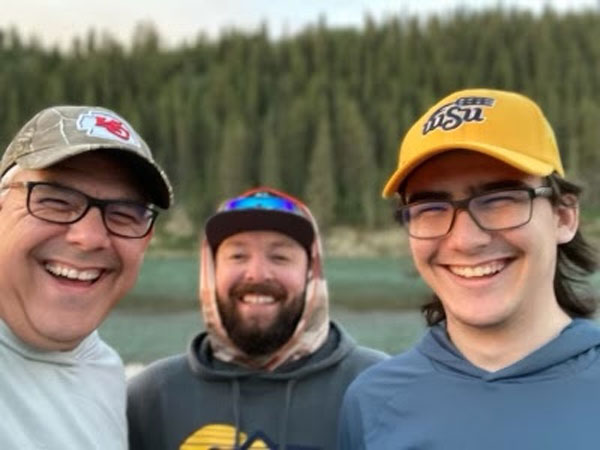
How to Choose your Fishing Guides in Alberta
Choosing the right fishing guide is crucial to ensure a successful trip on the Bow River. Here are a few tips to help you make the right choice:
- Do your research: Look for fishing companies with a good reputation and positive customer
- Experience matters: Opt for guides who have extensive knowledge of the Bow River and its fish species.
- Check their equipment: Make sure the fishing company provides well-maintained gear and quality boats.
- Ask about certifications: Inquire if the guides are certified and have the necessary licenses to operate.
- Customizable trips: Look for companies that offer tailored fishing experiences to meet your specific needs.
- The Outfitter should ask you lots of questions to make sure they understand your needs
Before You Book: What to Look for in Fly Fishing Companies & Charters
When booking a fly fishing trip on the Bow River, there are a few key factors to consider:
- Customer testimonials: Read reviews from previous clients to get a sense of the company’s reputation and the quality of their trips.
- Availability: Check the company’s schedule and make sure they have openings during your desired dates.
- Price and inclusions: Compare prices and make sure you understand what is included in the fishing package.
- Guide credentials: Inquire about the experience and qualifications of the guides who will be accompanying you on the trip.
- Flexibility: Look for fishing companies that offer flexible cancellation policies and rescheduling options.
What Is Usually Included in Fly Fishing Packages?
Fly fishing packages on the Bow River typically include the following:
- Professional fishing guide
- All necessary fishing equipment
- Transportation to and from the fishing location
- Packed lunch and refreshments
- Photography of your fishing adventure
It’s always a good idea to confirm the inclusions with the fishing company before booking to avoid any surprises on the day of your trip.
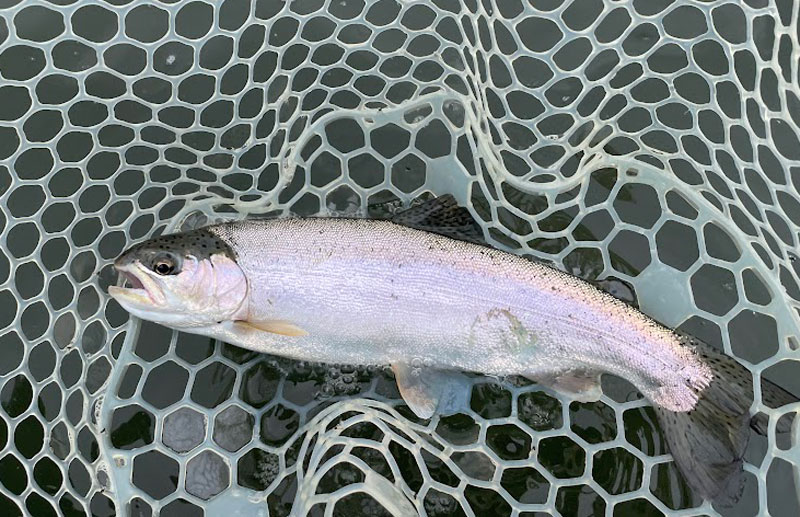
What Fish Are in the Bow River?
The Bow River is home to a diverse range of fish species. Anglers can expect to encounter brown trout, rainbow trout, and rocky mountain whitefish during their fishing adventures. These fish can grow to impressive sizes, with some reaching over 20 inches in length!
Additionally, the Bow River is known for the occasional northern pike, adding an extra layer of excitement to your fishing experience. With such a variety of fish, every cast could lead to a thrilling catch.
What Kind of Flies Are Used on the Bow River?
Choosing the right fly is essential for successful fly fishing on the Bow River. The most commonly used rigs include Streamers, Dry Droppers and Deep Nymph Rigs. Depending on the time of year and the fish you are targeting, the guides will recommend specific techniques, patterns and sizes. It’s important to have a variety of flies in your tackle box to match the changing conditions and the fish’s feeding preferences. Being prepared and adaptable will increase your chances of hooking into some trophy-sized trout.
How Does the Bow River Flow Rate Affect Fly Fishing?
The flow rate of the Bow River plays a significant role in fly fishing success. As water levels rise or fall, the behavior of the fish changes. When the river is high and fast, fish tend to seek shelter in calmer areas and along the riverbanks.
During lower flow rates, fish become more active and move into the main current to feed. Understanding how flow rate affects fish behavior will help you target the best fishing spots and increase your chances of a successful day.
How to Find the Best Fishing Spots near Calgary, Alberta
If you’re in search of the best fishing spots near Calgary, Alberta, look no further than the Bow River. Start by researching popular fishing locations, such as Policeman’s Flats, Graves Landing, and Fish Creek Provincial Park.
Consider hiring a fishing guide who can provide insider tips and take you to hidden gems along the river. These guides have spent countless hours exploring the Bow River and know where the fish are biting. They will ensure that you make the most of your time on the water.
Do You Need a License to Fish the Bow River in Alberta?
Yes, anglers are required to have a valid fishing license to fish the Bow River in Alberta. The province offers both resident and non-resident licenses, which can be purchased online or at authorized retailers.
It’s important to familiarize yourself with Alberta’s fishing regulations before casting your line. This will ensure that you are complying with the law and help protect the fish populations for future generations of anglers.
What Are the Benefits of Private Fly Fishing Lessons near Calgary, Alberta?
Private fly fishing lessons near Calgary, Alberta offer numerous benefits for anglers of all skill levels. Whether you’re new to fly fishing or looking to improve your casting technique, these lessons provide personalized instruction tailored to your needs.
During private lessons, you will receive one-on-one guidance from an experienced fishing guide who will share their expertise and help you refine your skills. You’ll learn the fundamentals of fly fishing, including casting techniques, fly selection, and reading the water.
Private lessons are ideal for beginners who want to start their fly fishing journey on the right foot. They also benefit experienced anglers who want to take their skills to the next level and catch more fish.
Frequently Asked Questions
Q: Can I bring my own fishing gear on a guided fly fishing trip?
A: Absolutely! If you have your own fishing gear and prefer to use it, you are welcome to bring it along. However, our fishing company provides all the necessary equipment to ensure that you have a successful and enjoyable experience on the Bow River.
Q: Is fly fishing on the Bow River suitable for beginners?
A: Yes, the Bow River offers excellent opportunities for beginners to learn the art of fly fishing. Our experienced guides will provide patient instruction and help you develop the skills you need to catch fish. With their guidance, even novice and first-time anglers can have a successful day on the water.
Q: What is the best time of year to fish the Bow River?
A: The Bow River can be fished year-round, but the most popular times are during the summer and fall. Early Summer brings the arrival of the stonefly hatch, which triggers a feeding frenzy among the fish. In the fall, the river is teeming with spawning trout, making it an excellent time to target big fish. However, anglers can enjoy a successful outing at any time of year, as the Bow River’s fish are active and hungry throughout the seasons.
Q: Can I catch and keep fish from the Bow River?
A: It depends on the fishing regulations set by Alberta’s Fish and Wildlife. Currently, on the Bow River, catch and release is mandatory in the sections we fish. This practice ensures that future generations of anglers can enjoy the thrill of fishing on the Bow.
As the fishing season on the Bow River comes to an end, our fly fishing company reflects on another successful year. We take pride in providing exceptional experiences to our clients and helping them create memories that will last a lifetime.
If you’re looking for your next fishing adventure, consider joining us on the Bow River. Whether you’re a seasoned angler or new to the sport, our knowledgeable guides will ensure that you have a memorable day on the water. Book your trip today and get ready to reel in some fish!

